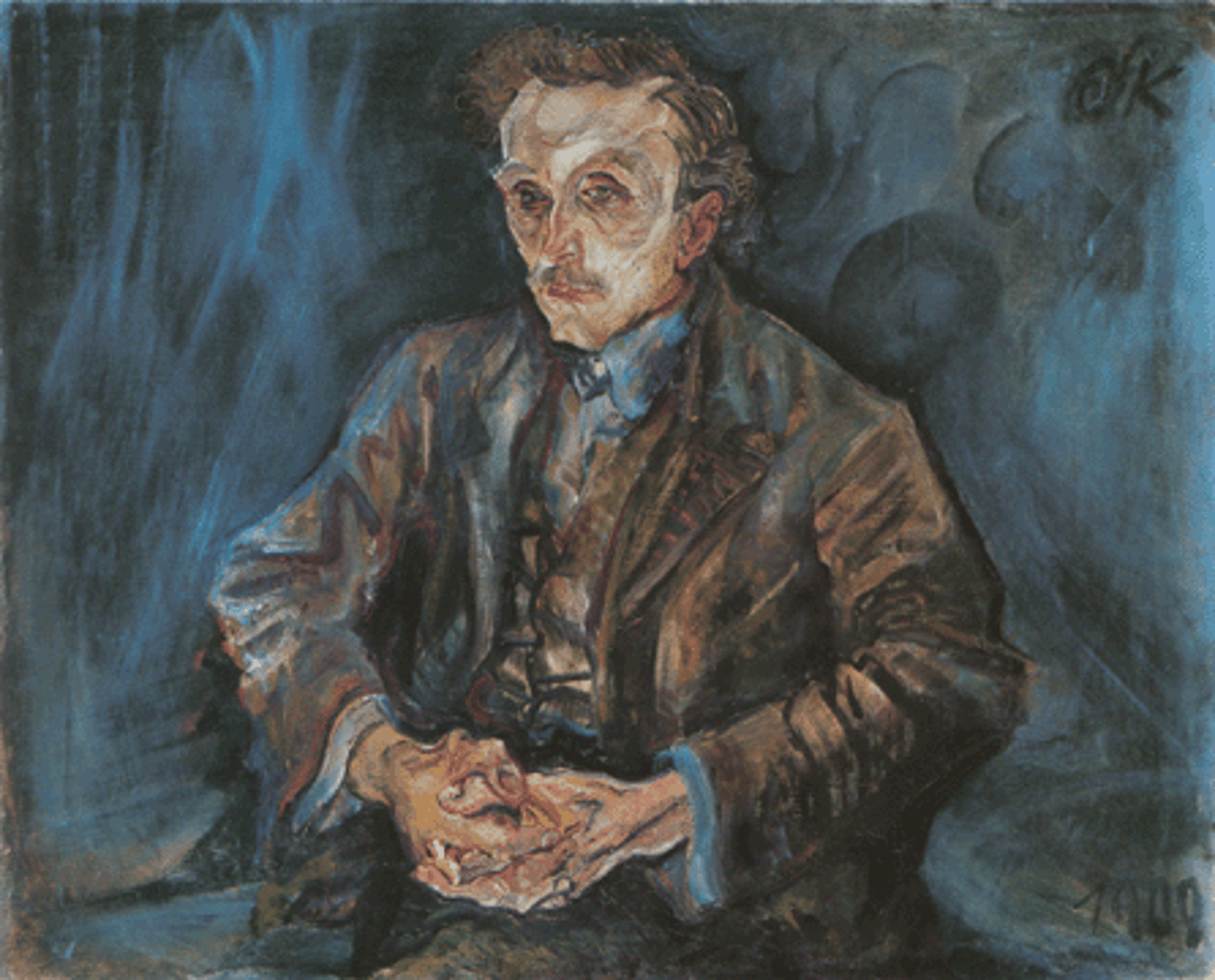20th Century Art History Exam 1
1/149
There's no tags or description
Looks like no tags are added yet.
Name | Mastery | Learn | Test | Matching | Spaced |
|---|
No study sessions yet.
150 Terms
what 19th century movements, artists, artworks and ideas contributed to the development of expressionism in the first decade of the 20th century
Romanticism
Symbolism
Impressionism
what significant changes occur in the treatment of pictorial space in paintings as art develops from Neoclassicism through Cubism
rational space
idealized proportioins
symbolic use of space
Part 1: Connect Last Name to Art Period
and
Part 2: Connect Last Name to Art Period
1&2
Neoclassicism
the revival of a classical style or treatment in art, literature, architecture, or music. looking back to classical antiquity for inspiration and valuing clarity and tradition in art.
Romanticism
focusing on emotion
nature
individual experience
dramatic scenes
vivid colors
feelings over reason
Realism
depicting everyday life
ordinary people
highlighting social issues
working class
emphasizes authenticity of the realities of life
Impressionism
effects of light and color
loose brushwork
vibrant color
movement and spontaneity.
outdoors
changing effects of light
Post-Impressionism
personal expression and structural form
bold colors
distinct brushwork
emotional and symbolic themes
Symbolism
ideas and emotions through symbolic imagery rather than realistic representation
convey deeper meaning
mythology, dreams, and spirituality
vivid colors
conveying inner experiences and emotions through symbols
Art Nouveau
elegant flowing lines
organic forms
inspired by nature (fruit)
decorative patterns
influenced architecture furniture and graphic design
Fauvism
bold use of color and strong brushwork.
vibrant, non-natuuralistic colors
express emotion rather than depict reality
often landscapes and portraits
prioritzed artistic expression over traditional representation
Die Brucke (the bridge)
german art movement
central to expressionism
challenge traditional art
express raw emotion
bold colors and dynamic forms
themes of modern life, sexuality, social issues
distorted figures and energetic brushwork.
Der Blaue Reiter
german expressionism
using bold colors and abstract forms
spirituality in art
color and emotion
abstraction
nature and symbolism
collaboration and exhibitions
Analytic Cubism
fragmented approach to form and focus on the analysis of objects from multiple viewpoints
fragmentation
limited color palette
focus on structure
still life and portraiture
influence of collage
Synthetic Cubism
second phase of cubism
use of brighter colors, more varied hues
collage techniques: newspapers, fabric etc
simplified forms
flatness
diverse subjects
symbolism and meaning
Futurism
celebrated modernity, technology, speed, and the dynamic energy of contemporary life.
emphasis on movement
and speed
technology and modernity: cars trains and industrial machinery
vibrant colors
fragmentation
themes of war
Constructivism
integration of art into everyday life
art as a tool for society - art should serve a function
emphasis on materiality - found objects, used metal wood glass
geometric forms and a focus on abstraction
collaboration accross disciplines : art, architecture, design, and graphic design
Vorticism
british art movement
modernity and dynamic forms
influenced by futurism and cubism
dynamic abstraction
energy and movement
vibrant colors
geometric forms
vortex: the swirling energy of modernity and chaos of urban life
Part 3: Attach the Artist to the Description
3
Behrens
modern architecture and design German Werkbund movement
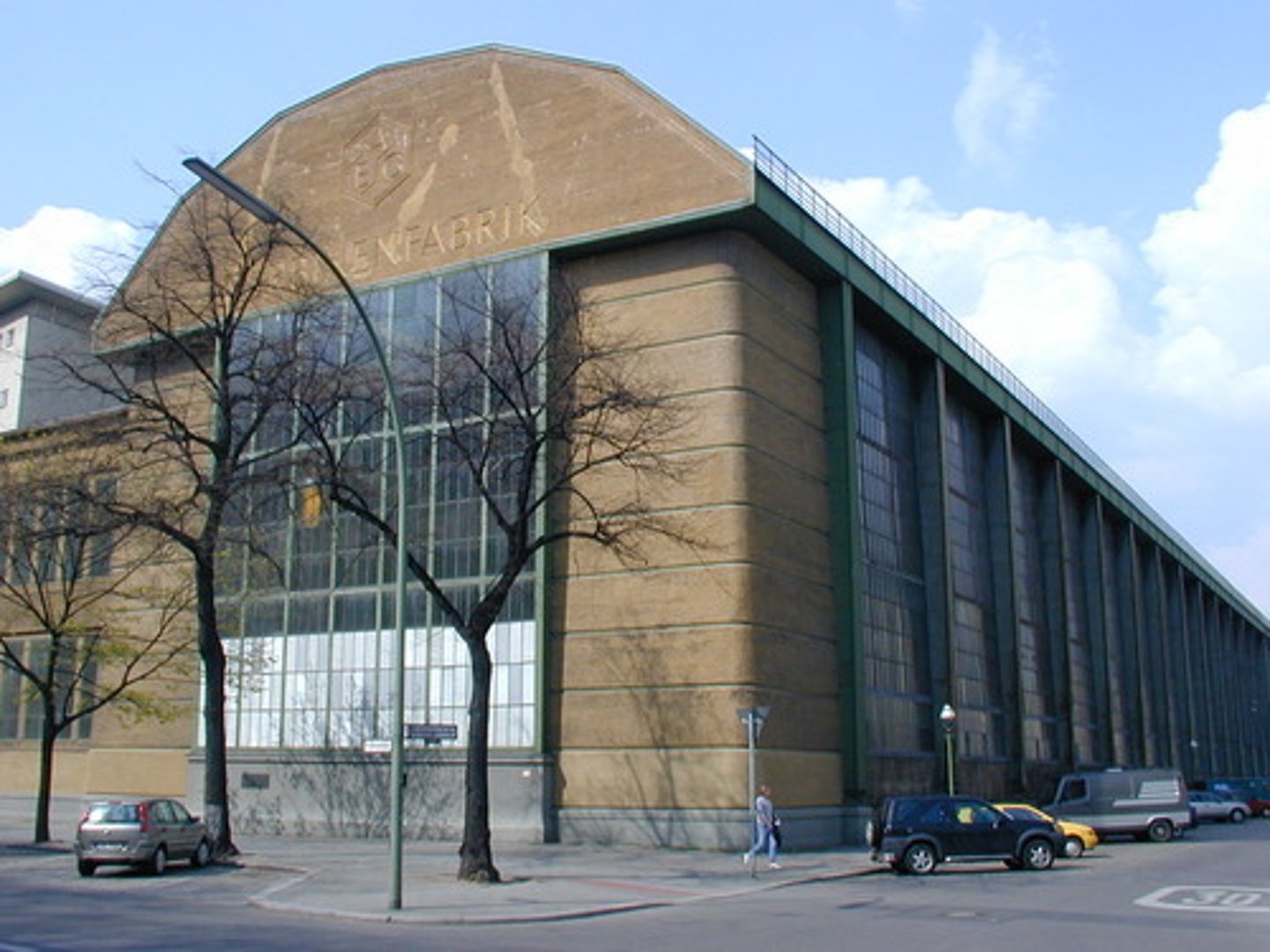
Boccioni
Futurism - conveyed movement and speed
contribued to the futurist manifesto: articulating the principles of the movement and modernity
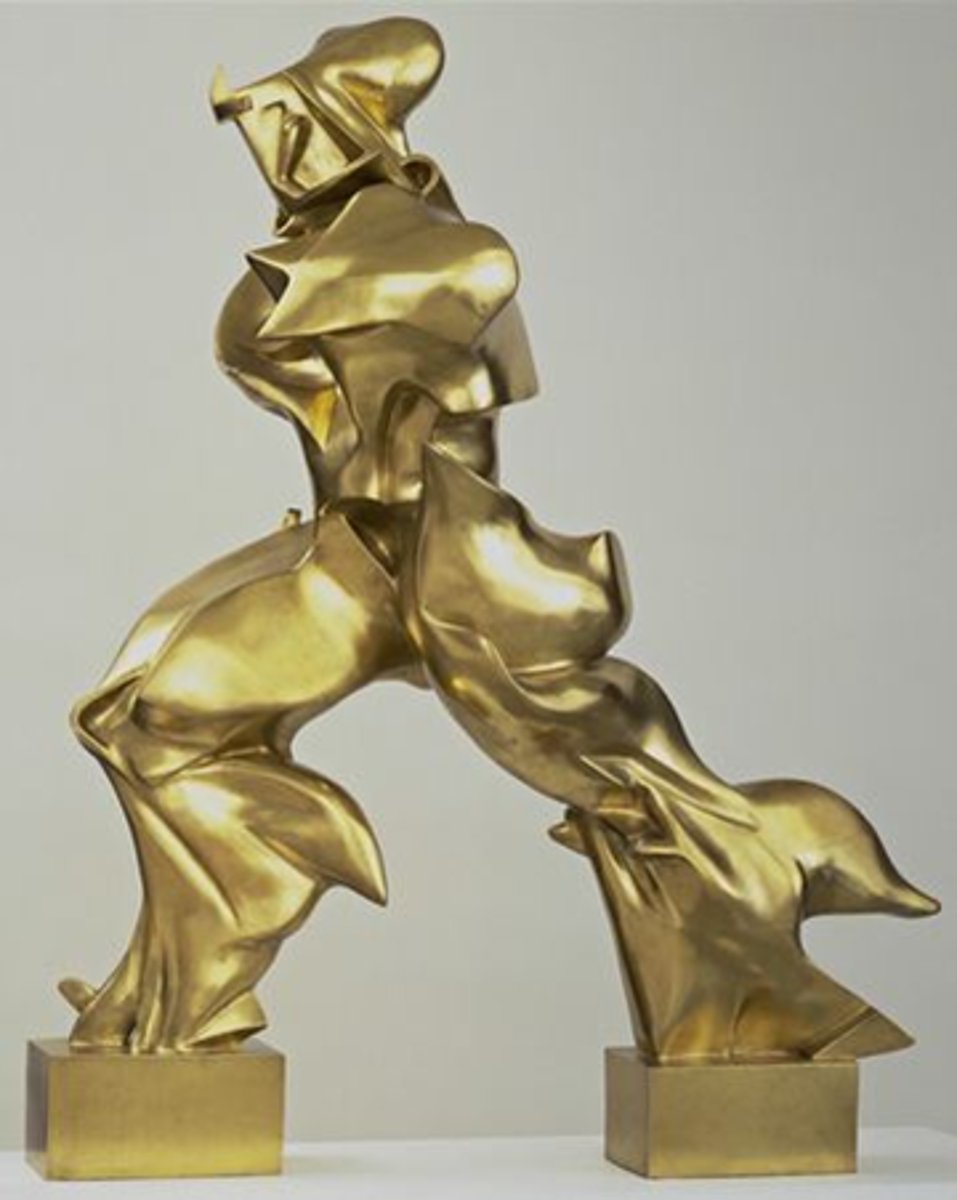
Brancusi
associated with modernism and is the pioneer of abstract sculpture
- simplicity and abstractions
- clean lines
- material use of marble bronze and wood
- organic forms - inspired by nature
- focus on light and shadow
- spirituality
- innovative base design
- emphasis on viewer experience

Braque
cubism
emphasis on form and structure
was picasso's bestie
- subdued color palette
- collage and mixed media
- emphasis on structure
- interplay of texture
- integration of space
- influence of nature
- exploration of light
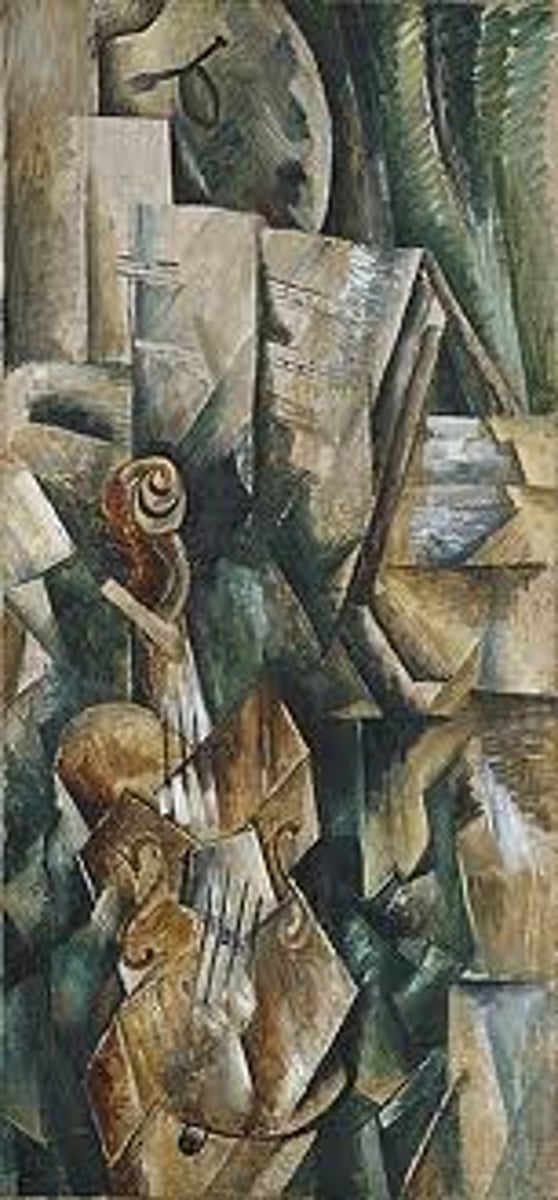
Cassatt
Impressionism- vibrant colors and loose brushwork, influence of japanese art, one of the few prominent female impressionists. broke through gender barriers.
- Focus on women and children
- unique perspectives
- psychological depth
- use of color
- domestic settings
- influence of japanese art
- print making
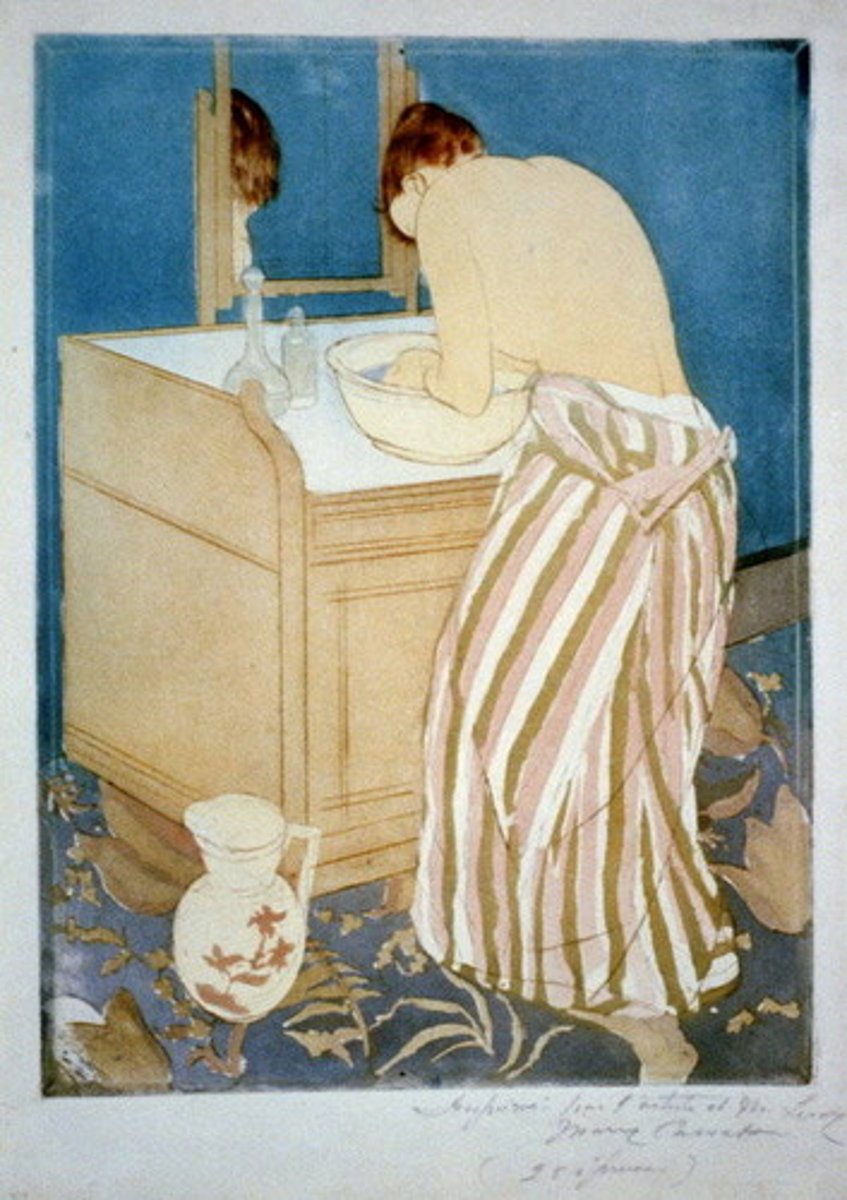
Cezanne
Post-Impressionism
focus on structure, form, and systematic approach to color and composition
geometric shapes
- geometric form
- brush strokes thick and textured
- color modulation for volume and light. colors side by side not blending them all the way
- nature, still life, and landscape
- sense of tranqility and contemplation
- influenced the fauves and cubists
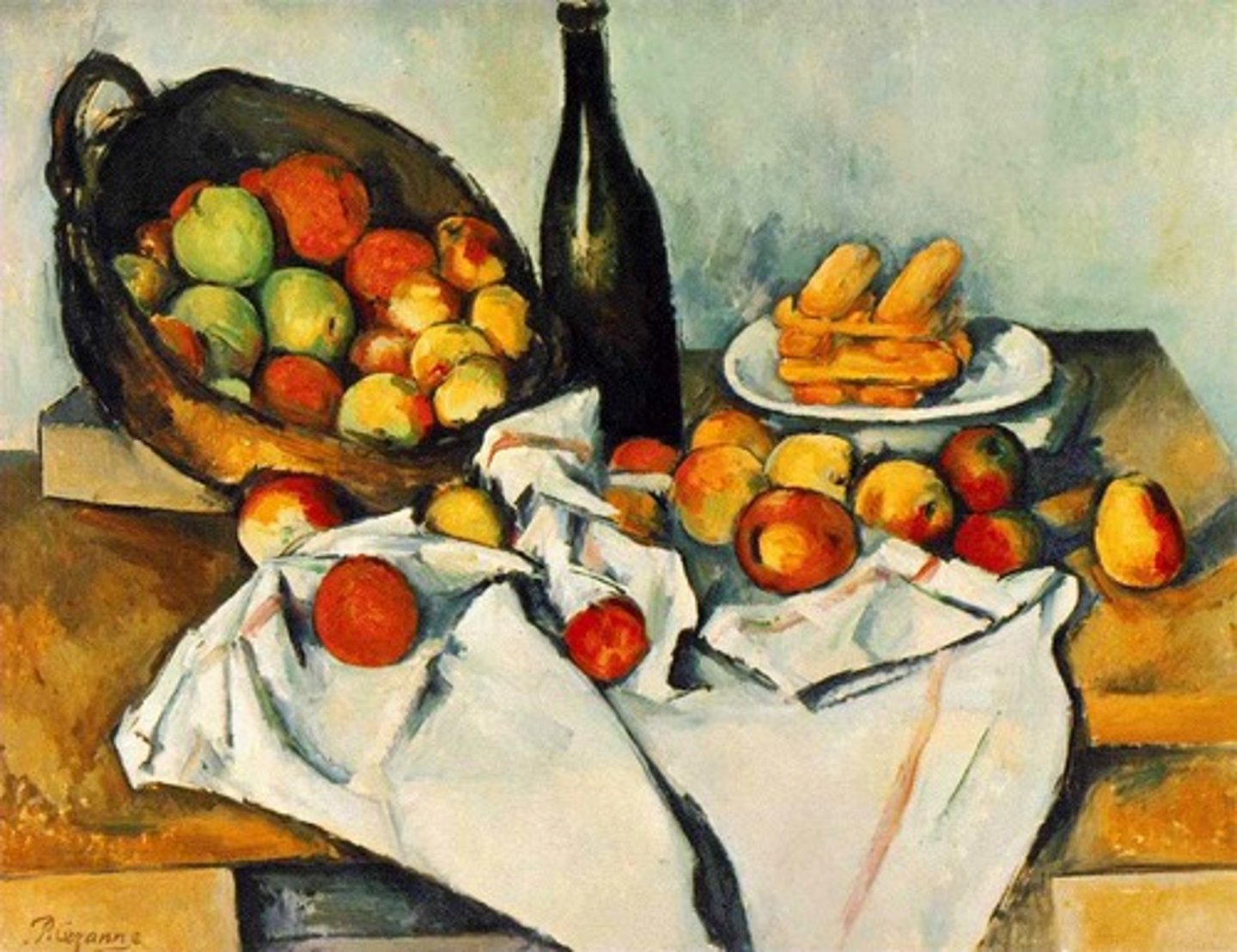
Chagall
surrealism, fauvism, and expressionism
- vibrant color
- express dreamlike atmospheres
- symbolism - jewish folklore
- whimsical imagery
-narrative quality
-emotional depth
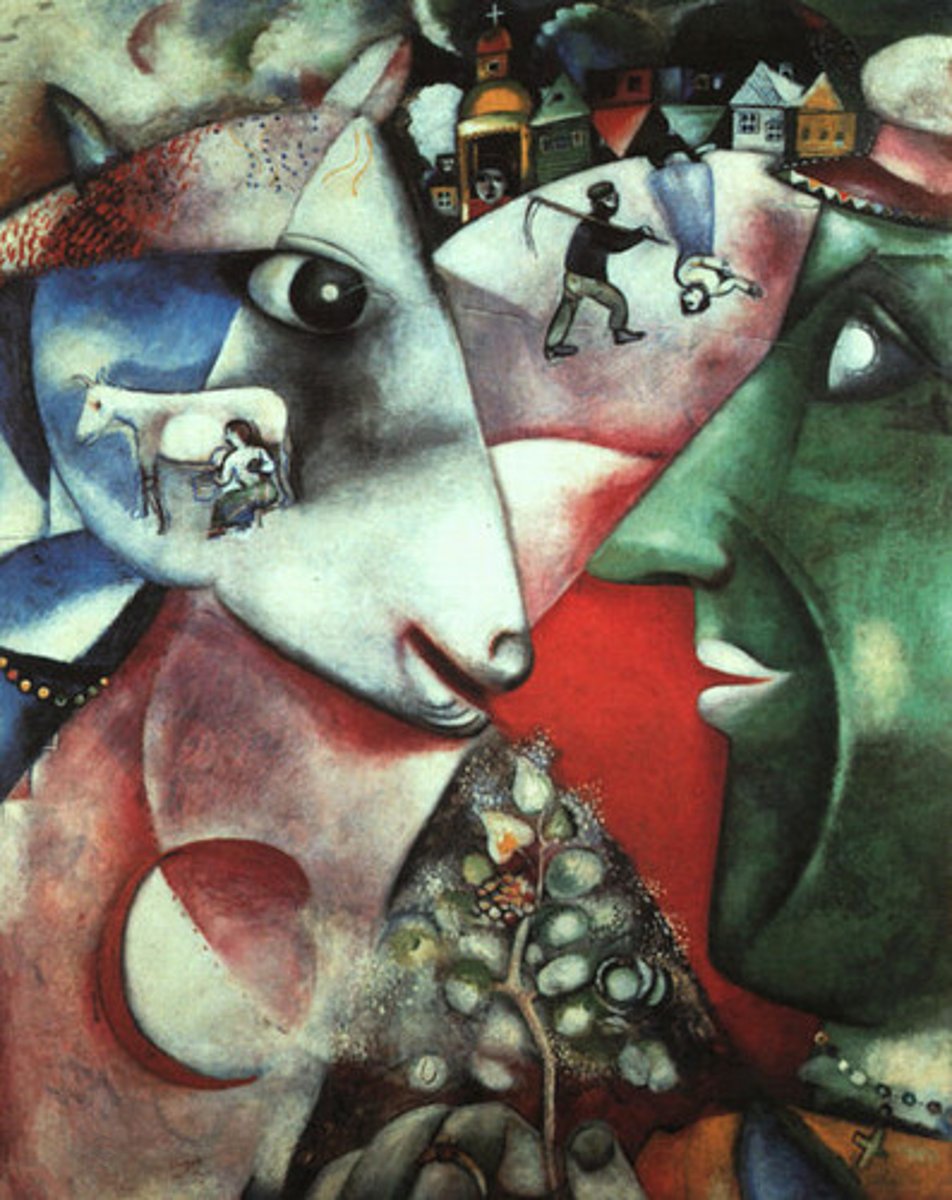
Constable
romanticism
- naturilism
-light and atmosphere
- loose expressive brushwork
- works reflected emotional attath=chment to specific
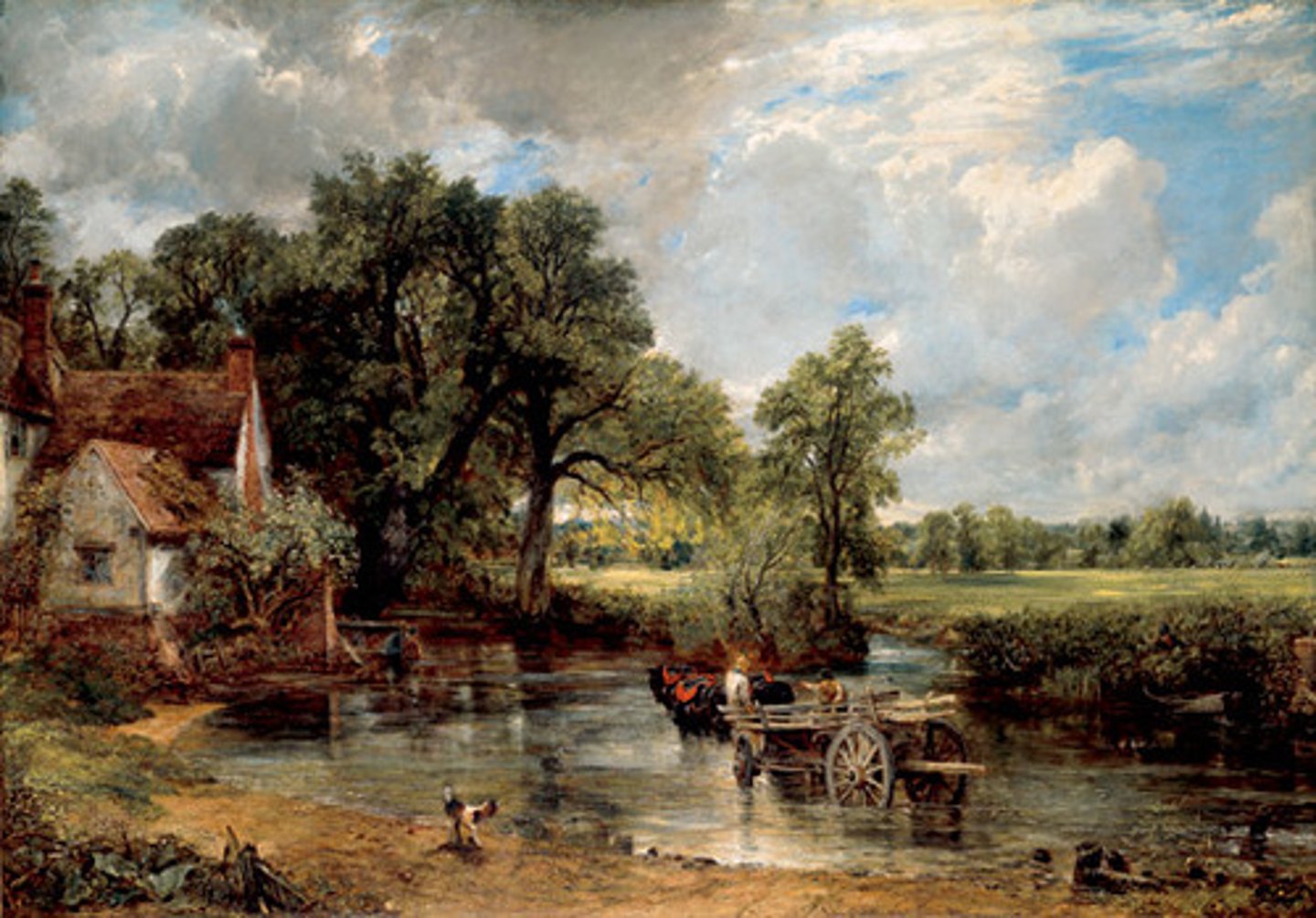
David
Neoclassicism
- historical themes
- moral lessons and civic virtures
- dramatic composition
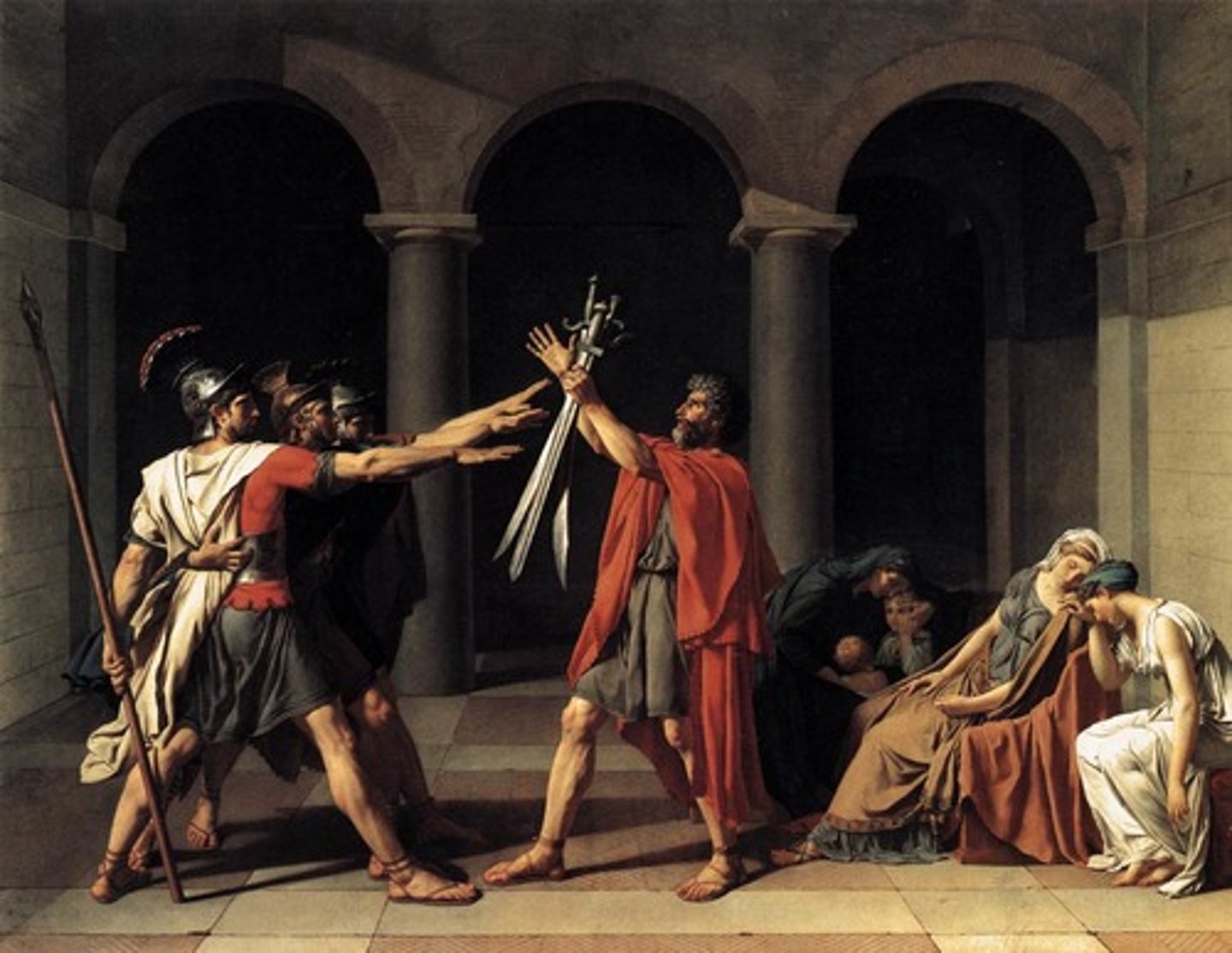
de Chirico
metaphysical painting movement
- combines dreamlike and surreal elements
- mystery and unease
- strong shadows
- symbolism
- unusual perspectives and distorted forms

de Toulouse-Lautrec
post-impressionism and the Art Nouveau
- night life of paris, dance halls,
- expressive figures
- use of color and line
- Print making
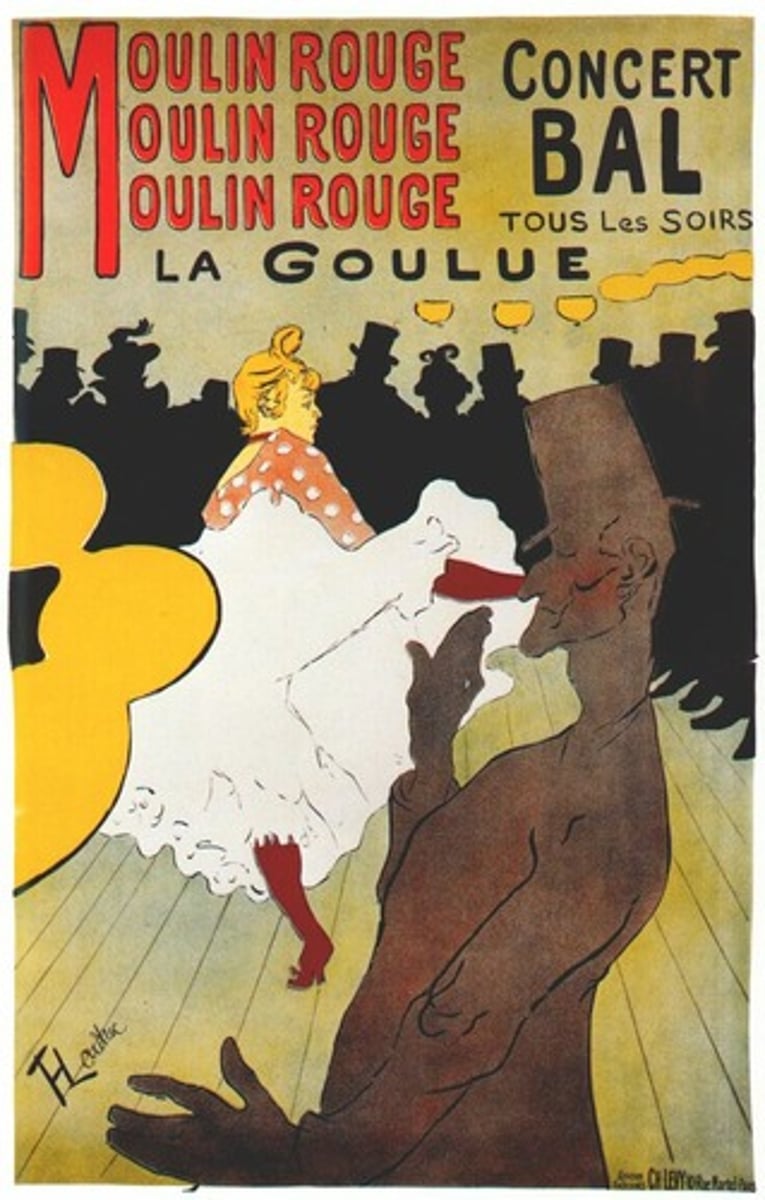
Degas
Impressionism - preferred to be called a realist
- focus on movement (ballet dancers)
- unusual viewpoints
- use of pastels
- every day life scenes
- influence of japanese art
- attention to detail
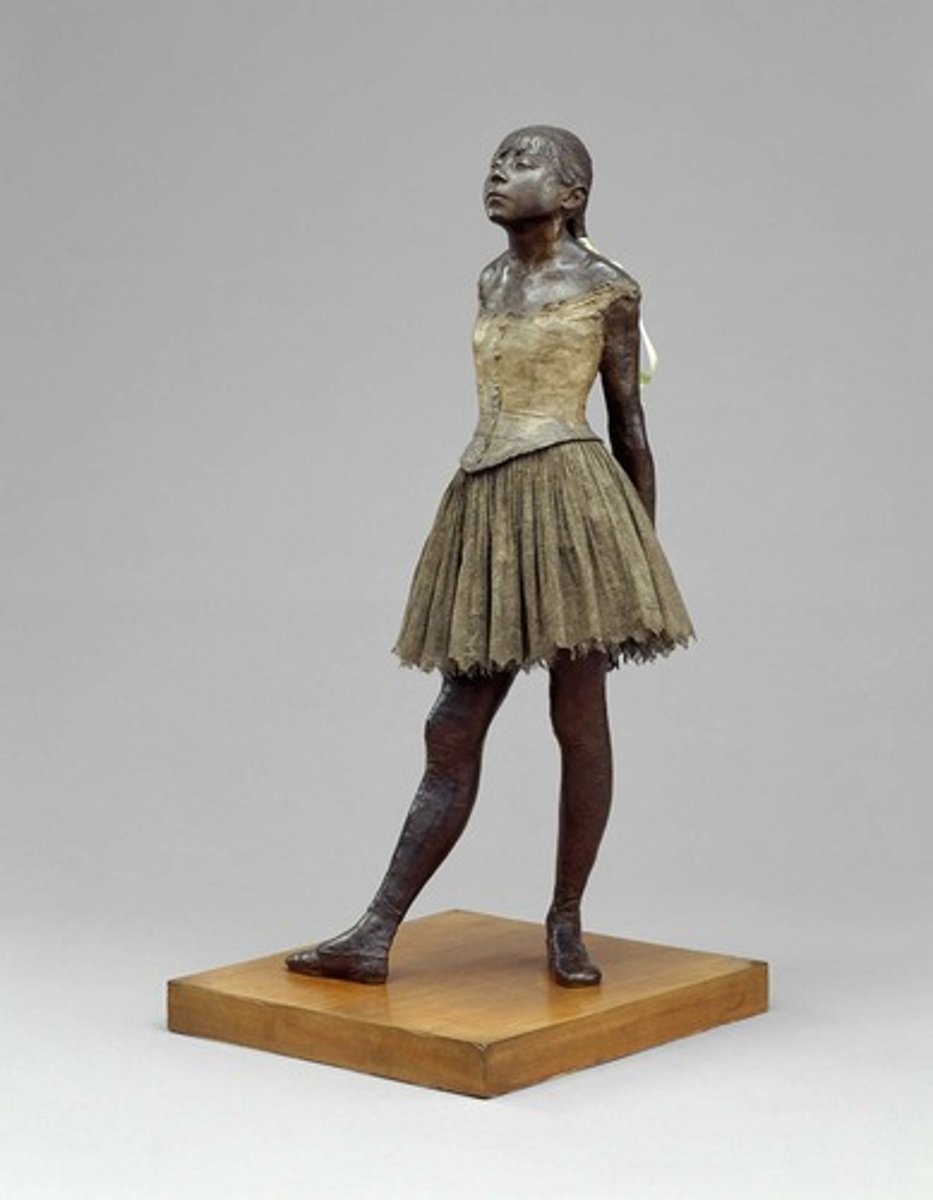
Delaunay
orphism
- vibrant color
- circular forms
- light and movement
- abstraction
- layering and overlapping
- influence of urban life

Derain
fauvism
- bold color palette
- loose brushwork
- simplified forms
- contrasted and harmoniezed complementary colors
- influenced by impressionism
- landscape, portraits, and still lifes
- flattened forms for a two dimensional effect
- integration of african art

Duchamp
Dada - an avante-garde art movement
- readymades (ordinary objects presented as art)
- ideas over aesthetics
- believed the artist's intention and context were crucial to the interpretation of the art
- humor and irony
- played chess

Gaudi
modernisme
- organic forms
- appreciation for nature
- color and texture
- using arches and hyperbolic paraboloids
- art and architecture
- nature inspired geometry
- whimsical elements
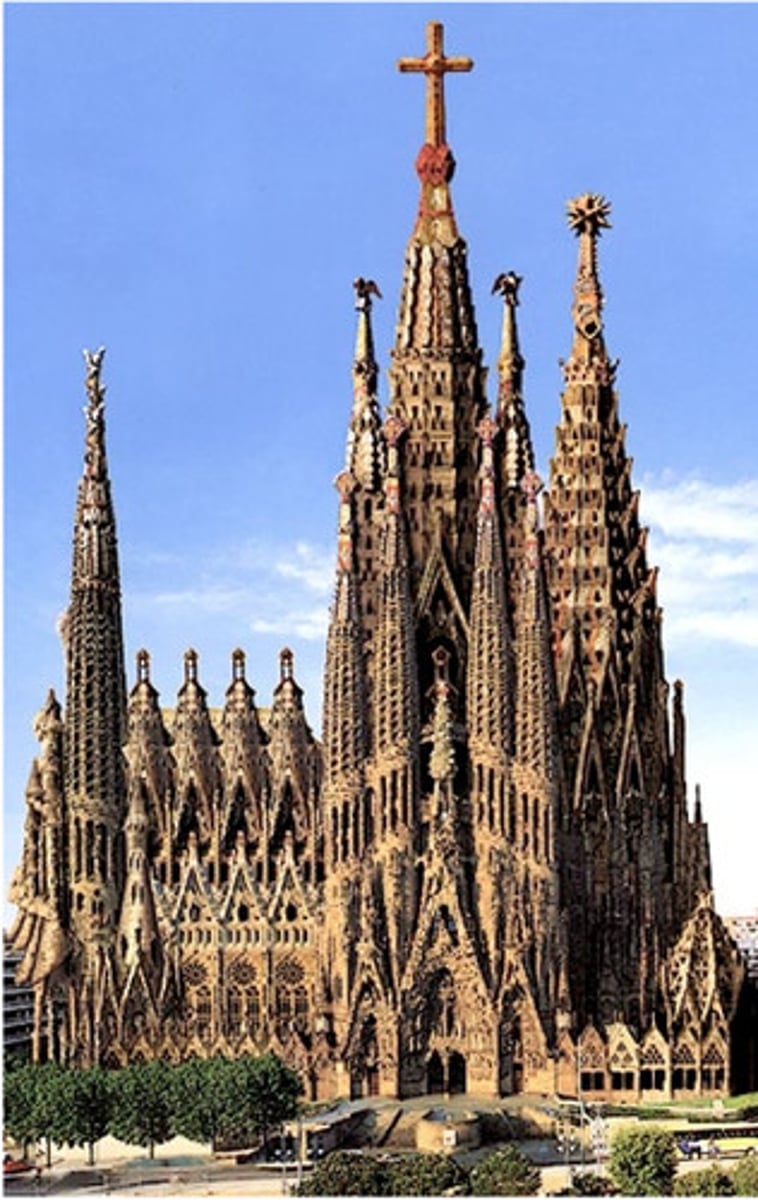
Gauguin
post-impressionism
- vibrant color palette
- exotic themes
- simplified forms/flat
- strong outlines
- use of patterns
- spirituality
- impacted fauves and expressionists

Ingres
neoclassicism
- linear precision
- idealized figures
- rich color palette
- historical and mythological themes
- emphasis on detail
- portraiture
- fusion of neoclassicism and romanticism.
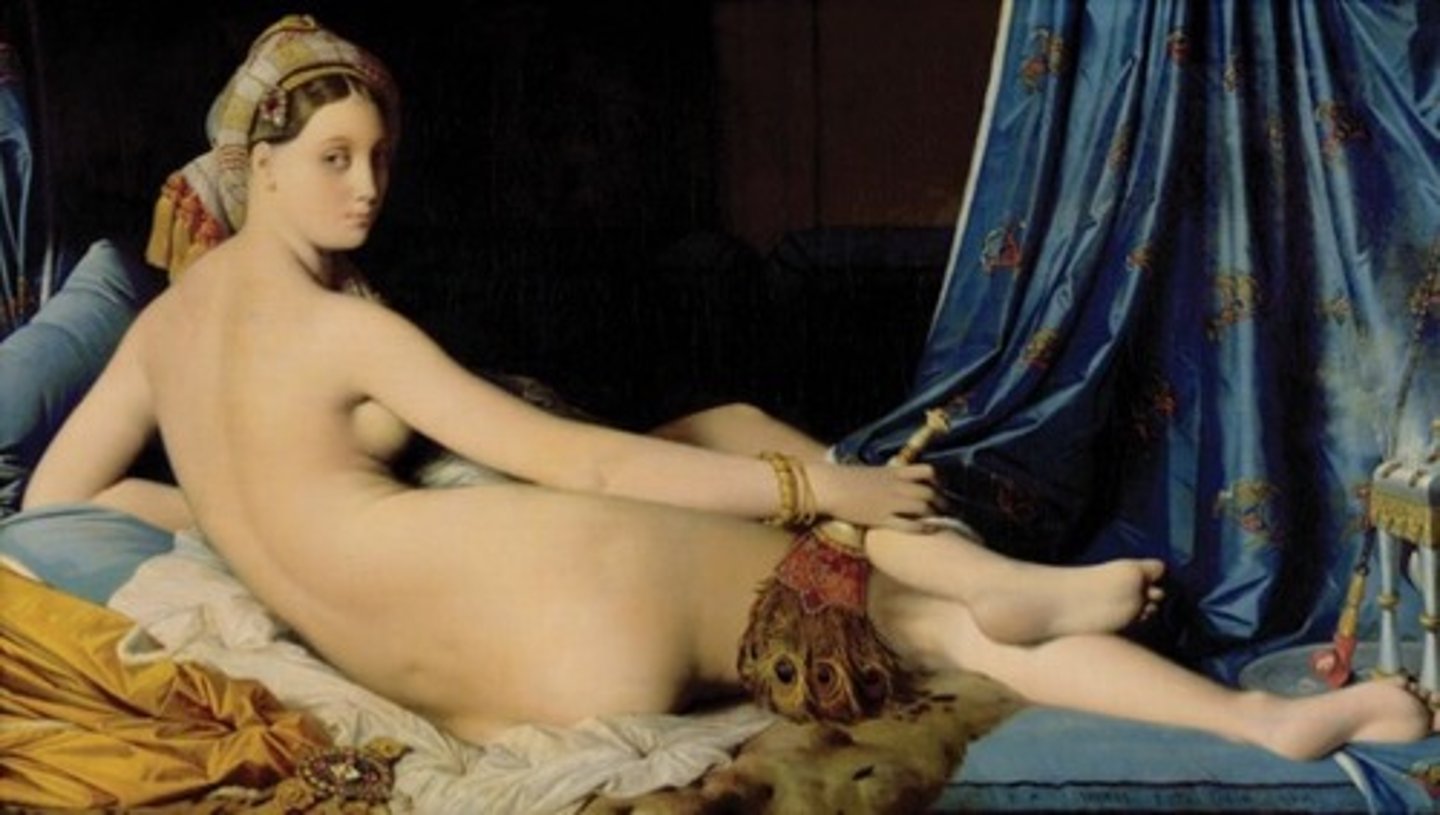
Kandinsky
abstract art and is considered a pioneer of expressionism
- abstract forms
- vibrant color palette
- spirituality and emotion
- influence of music (harmony and impact of rhythm)
- geometric and organic shapes
- layering and transparency
- manifestos and theories

Kirchner
expressionism
- bold color palette
- expressive loose brushstrokes
- distorted forms
- themes of modern life
- psychological depth
- integration of printmaking
- influenced by african and oceanic art
-subjectivity rather than literal interpretation
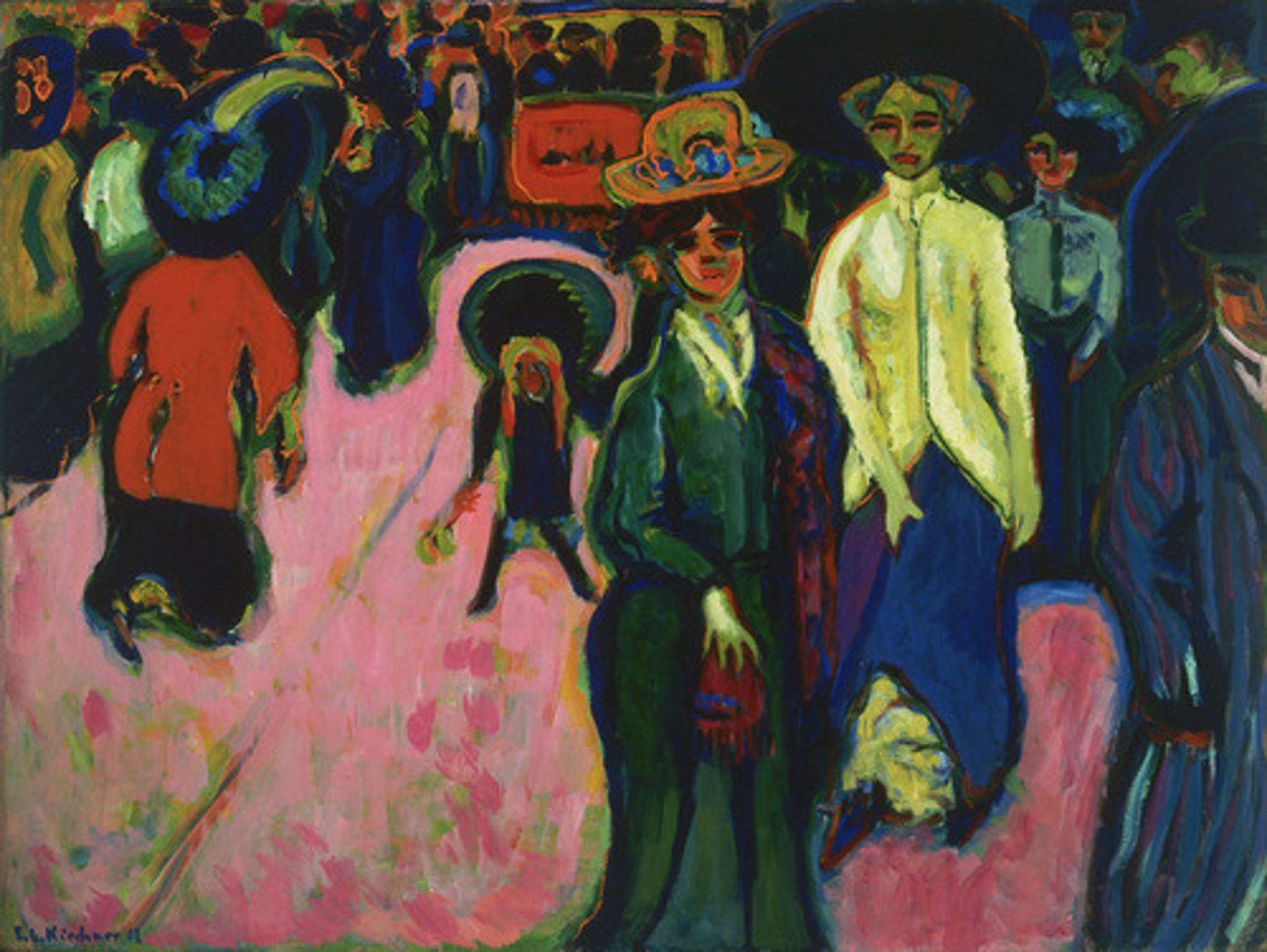
Klee
expressionism and surrealism and abstraction
- childlike simplicity
- color theory
- abstract forms
- symbolism and meaning
- line and rhythm
-integration of techniques (drawing painting and printmaking)
- dreamlike imagery
- personal experience emphasis
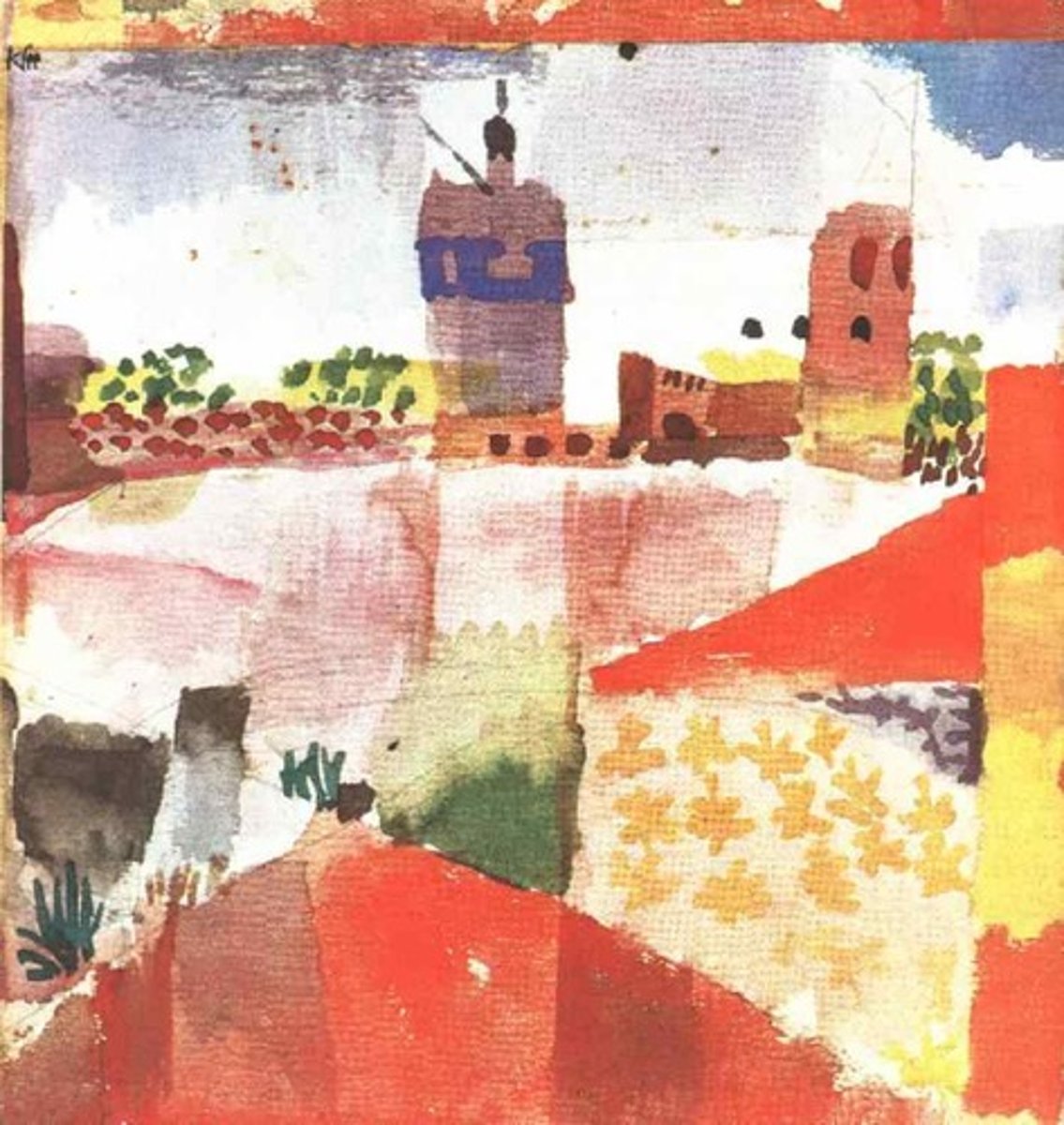
Klimt
symbolism and art nouveau
- ornate decoration
- stylized forms
- sensuality and feminity
- use of color
- integration of natural elements
- emphasis on pattern
-psychological depth
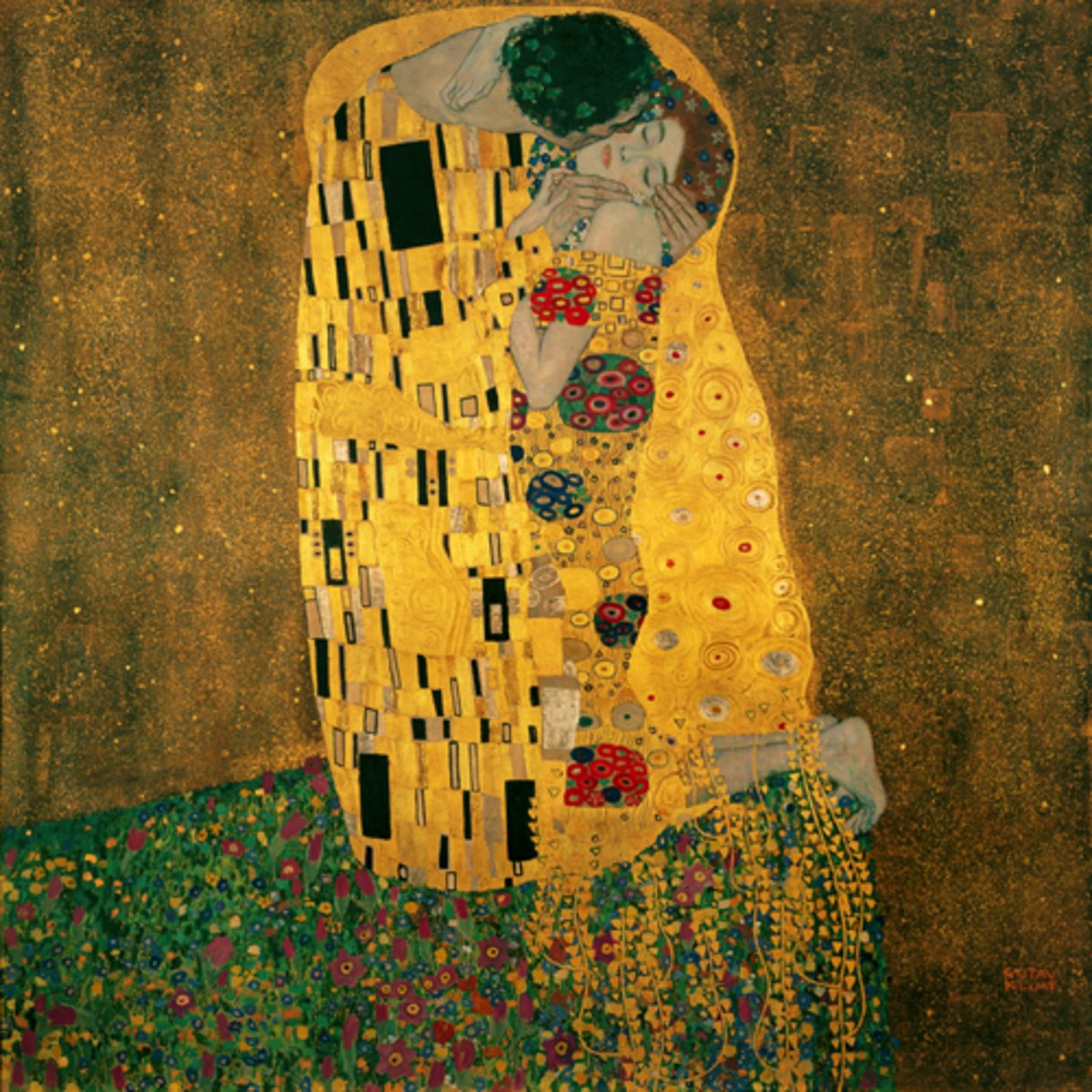
Kokoschka
expressionism
- emotional intensity
- vibrant color palette
- dynamic brushwork
- psychological depth
- symbolism and mythology
-distorted forms
- themes of love and loss
- theatrical elements
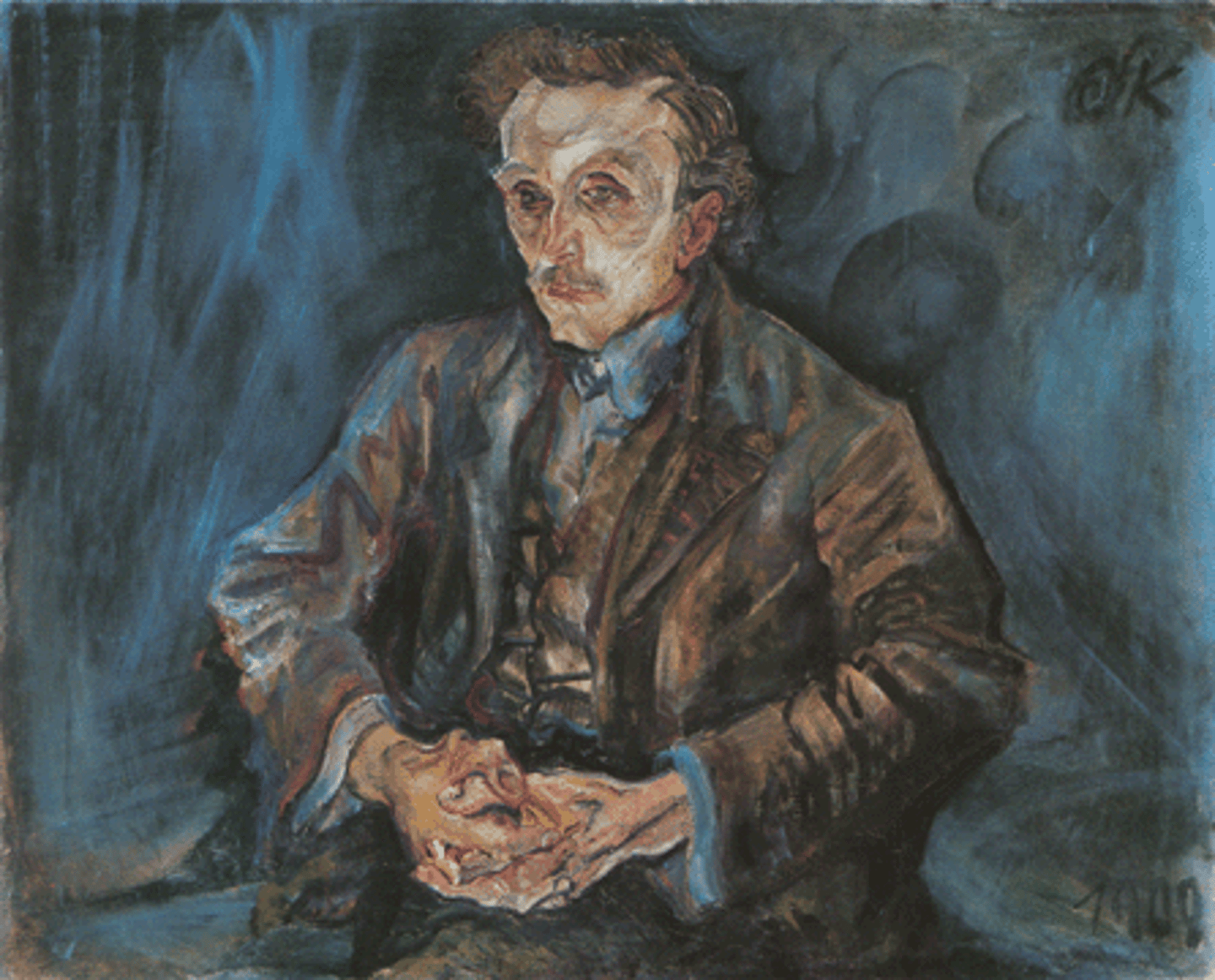
Percy Wyndham Lewis
vorticism
- co founder of the vorticist movement
- bold geometry
- dramatic color palette
- figurative abstraction
- psychological depth
- influence of technology (impact of industrialization)
- dynamic composition (rhythm that invites viewers to engage with the artwork actively)
- integrated literary themes

Loos
modern architecture
- functionalism
- minimalism
- spatial planning
- materiality
- interior design
- architectural clarity
- emphasis on individuality

Malevich
suprematism
- founded the suprematism movement
- abstract forms
- bold color palette
-
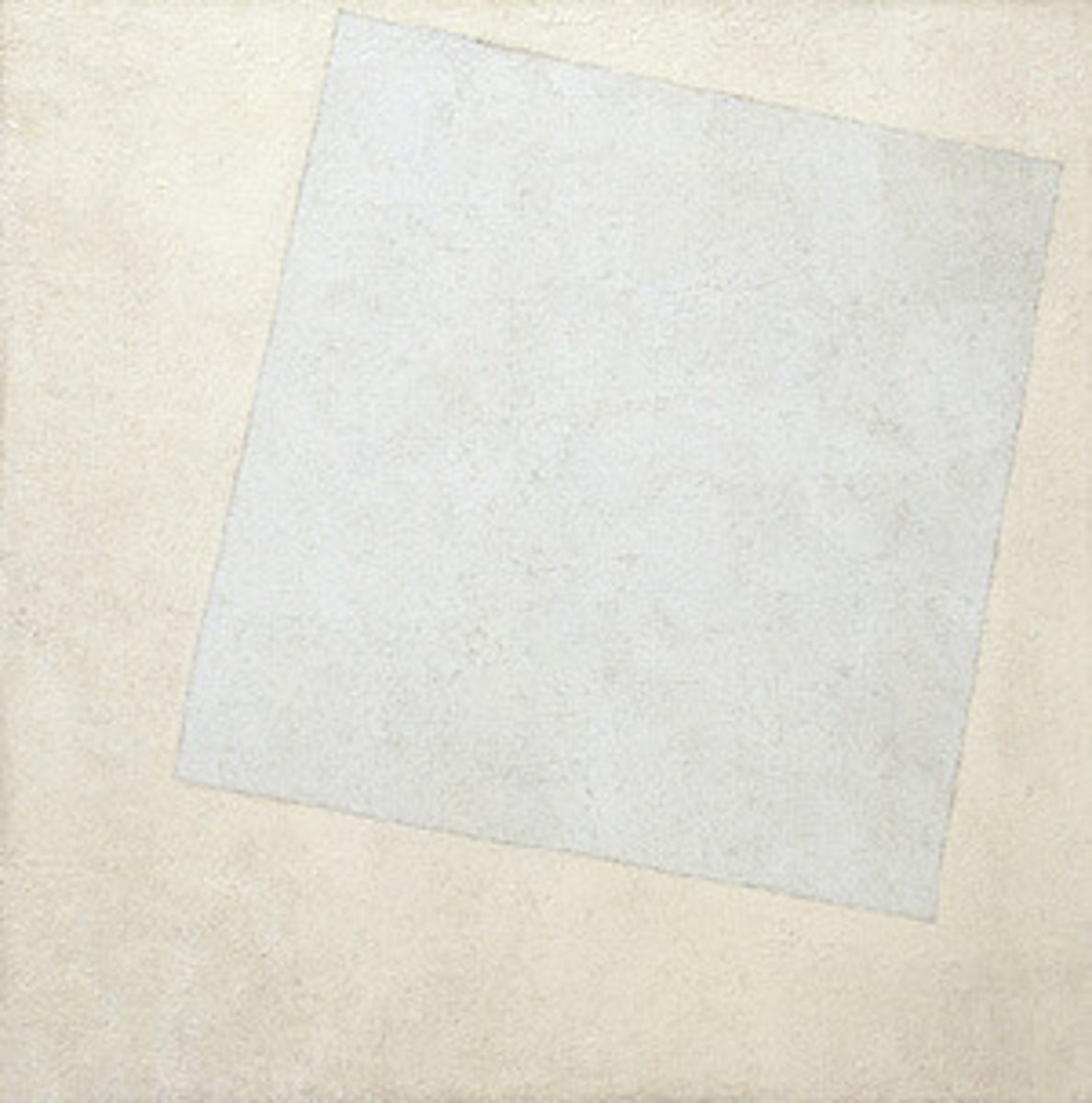
Manet
impressionism
- a pivotal figure in the transition from realism to impressionism
- loose brushwork
- bold use of light and shadow
- controversial subject matter: provocotive themes
- flatness and composition
- influenced by the emerging medium of photography
- social issues and complexities of modern life
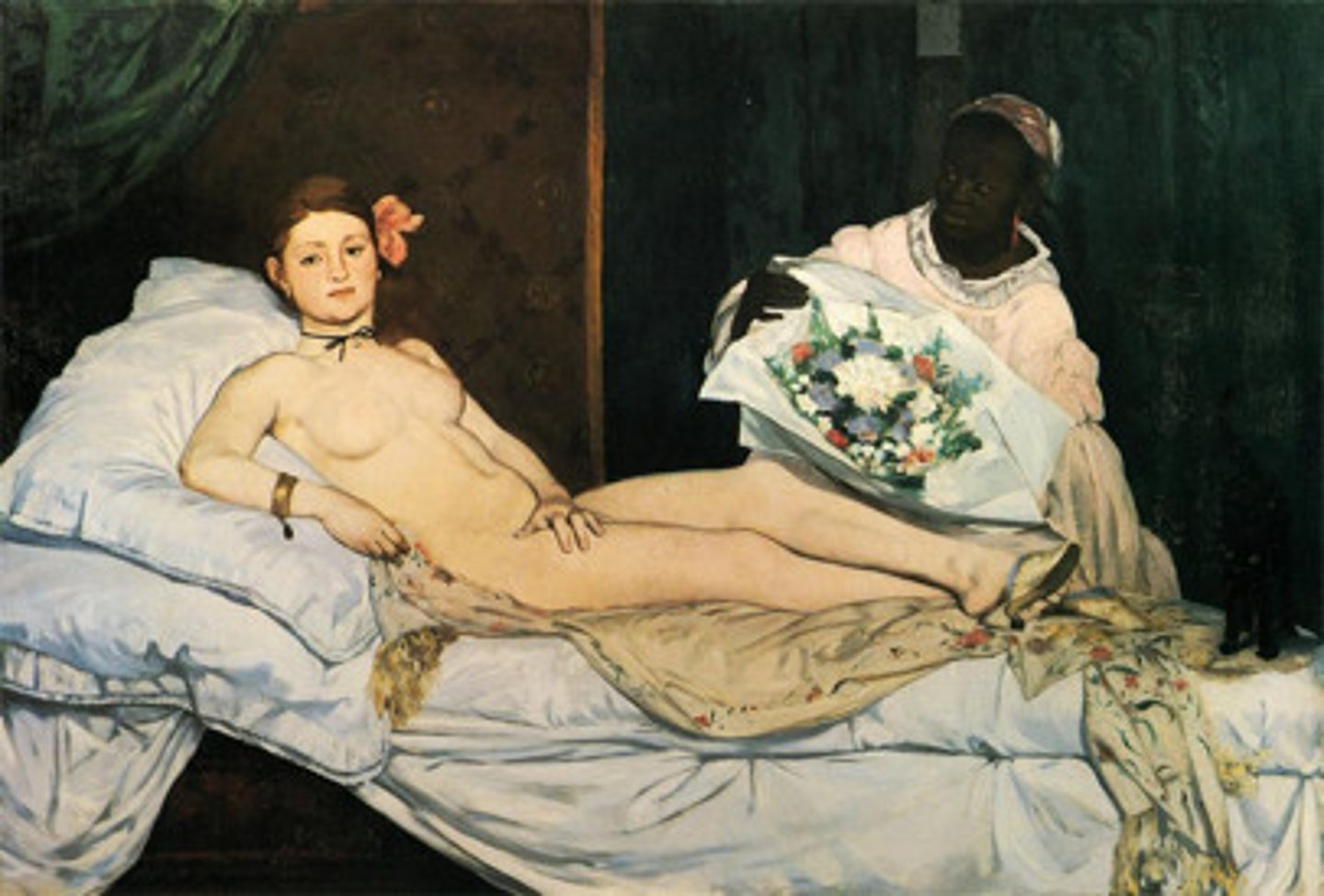
Marc
expressionism: Der Blaue Reiter
- bold color palette
- non-naturalistic colors
- animal subjects
- geometric forms
- symbolism in the use of color
- dynamic composition
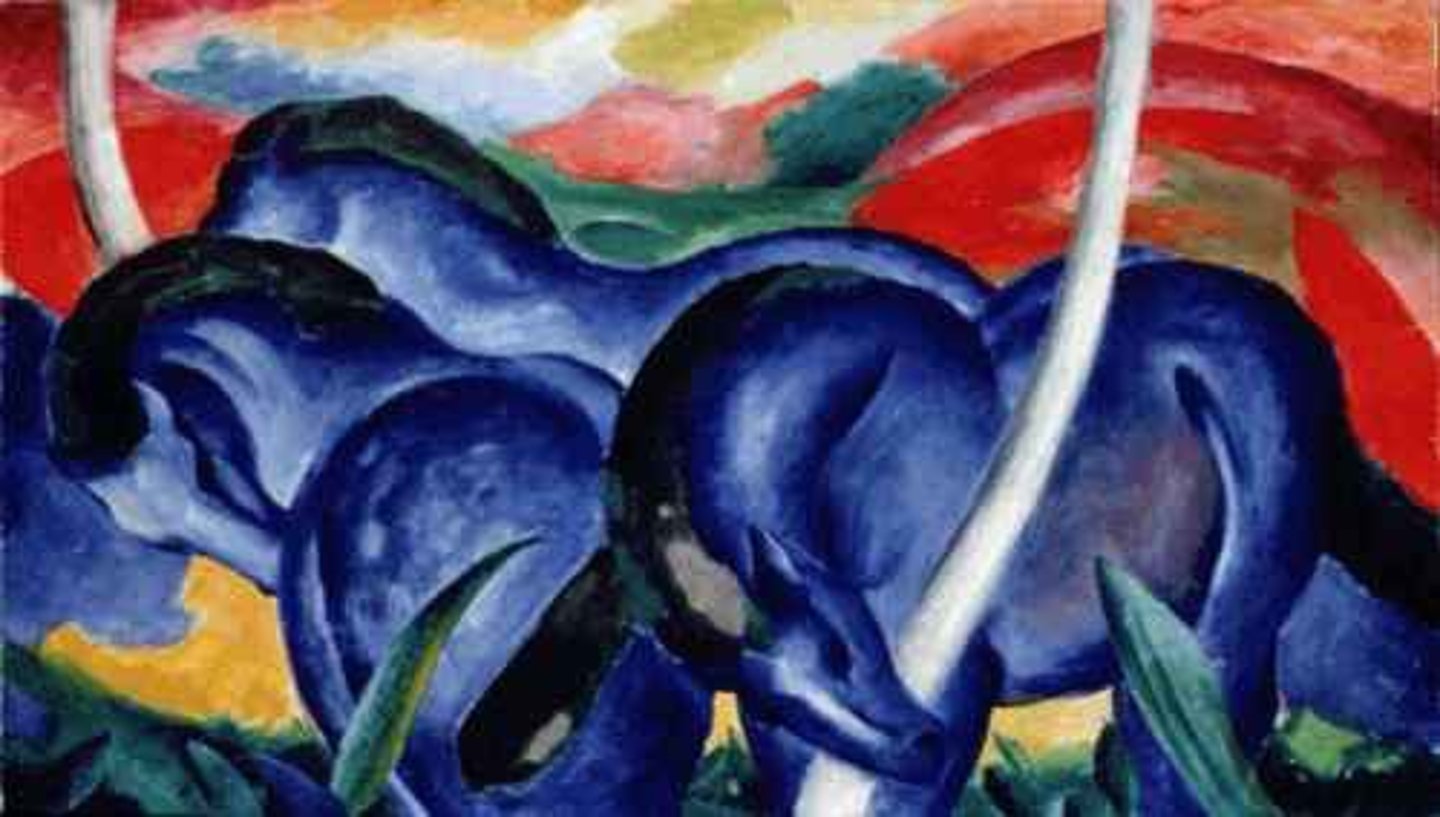
Matisse
fauvism
- bold color brush work is spontaneous and fluid
- placed contrasting hues side by side to enhance vibrancy
- expressive brushwork
- simplification and abstraction (reducing subjects to their essential shapes and colors)
- use of pattern
- interior and still life
- cut-outs

Monet
impressionism
- light and atmosphere
- loose rapid brushwork
- vibrant color palette
- emphasis on nature
-fleeting impressions of a moment rather than detailiing every aspect of the scene

Munch
symbolism and expressionism cub
- deep psychological and emotional states: themes of anxiety, love, death, and existential despair
- vibrant color palette
- expressive line work
- psychological depth
- fragmentation
- themes of isolation
- influenced by norwegian culture
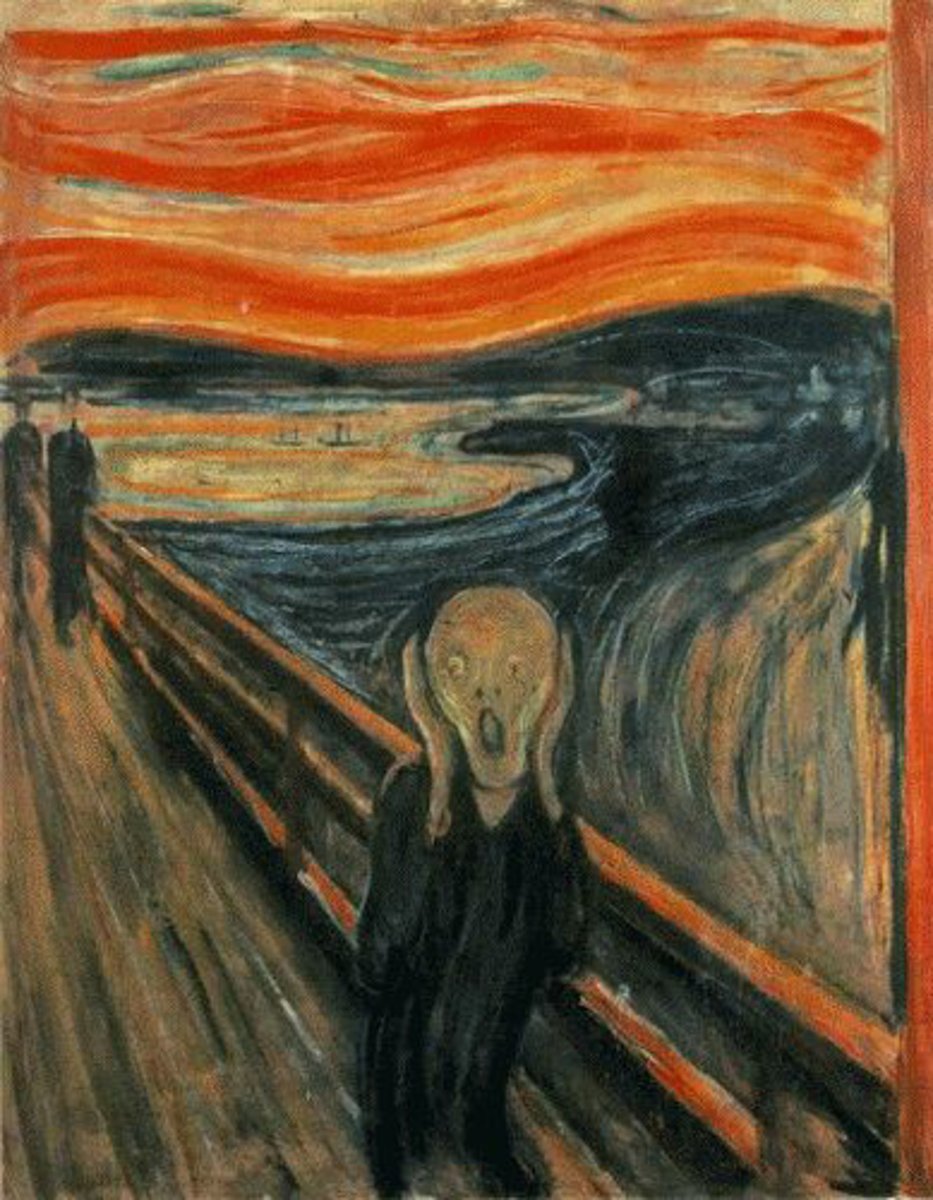
Picasso
cubism and surrealism
- co founder of cubism
- blue, rose, surrealism, and neo-classicism periods
- bold color choices
- expressive line and form
- rich in narrative
- themes of war, love, human suffering
- collage and mixed media
- influenced by african art (masks)

Renoir
impressionism
- vibrant color palette
- focus on light
- lively brushwork
- every day life scenes
- human figures
- rich textures
- influenced by japanese art
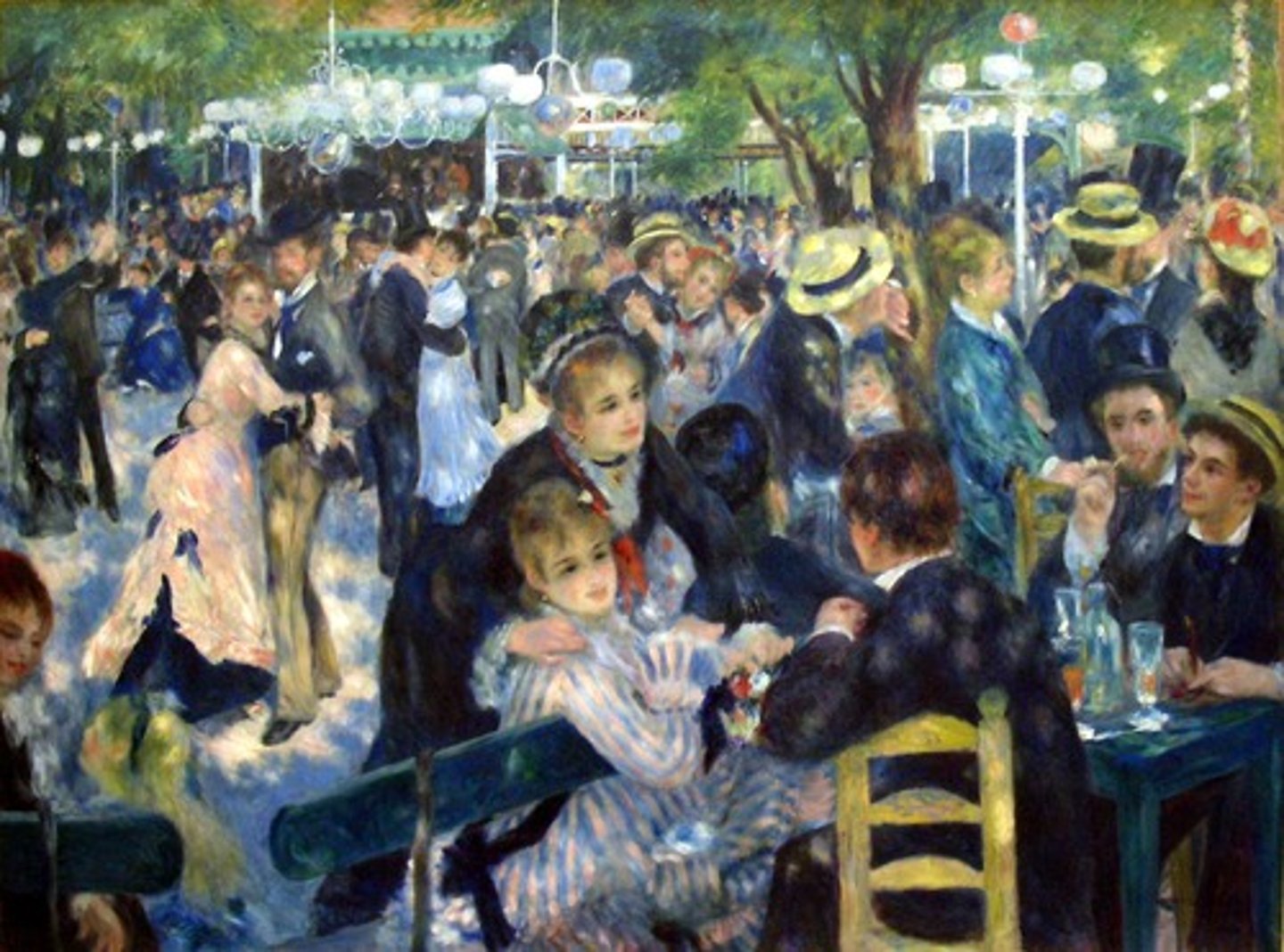
Rodchenko
constructivist
geometric abstraction
- russian artist and designer
- use of geometry
-bold color palette
- photographic innovation
- social and political themes (commitment to the ideals of the soviet union and constructivism)
-fusion of art and daily life
- art should serve a social purpose
- Collage
- worked in painting, sculpture, graphic design, and photography
Rodin
symbolism and moderns sculpture
- emotional expression
- realism ad detail
- dynamic movement
- fragmentation
- linked to the principles of impressionism
- considered the placement of sculptures within their surroundings
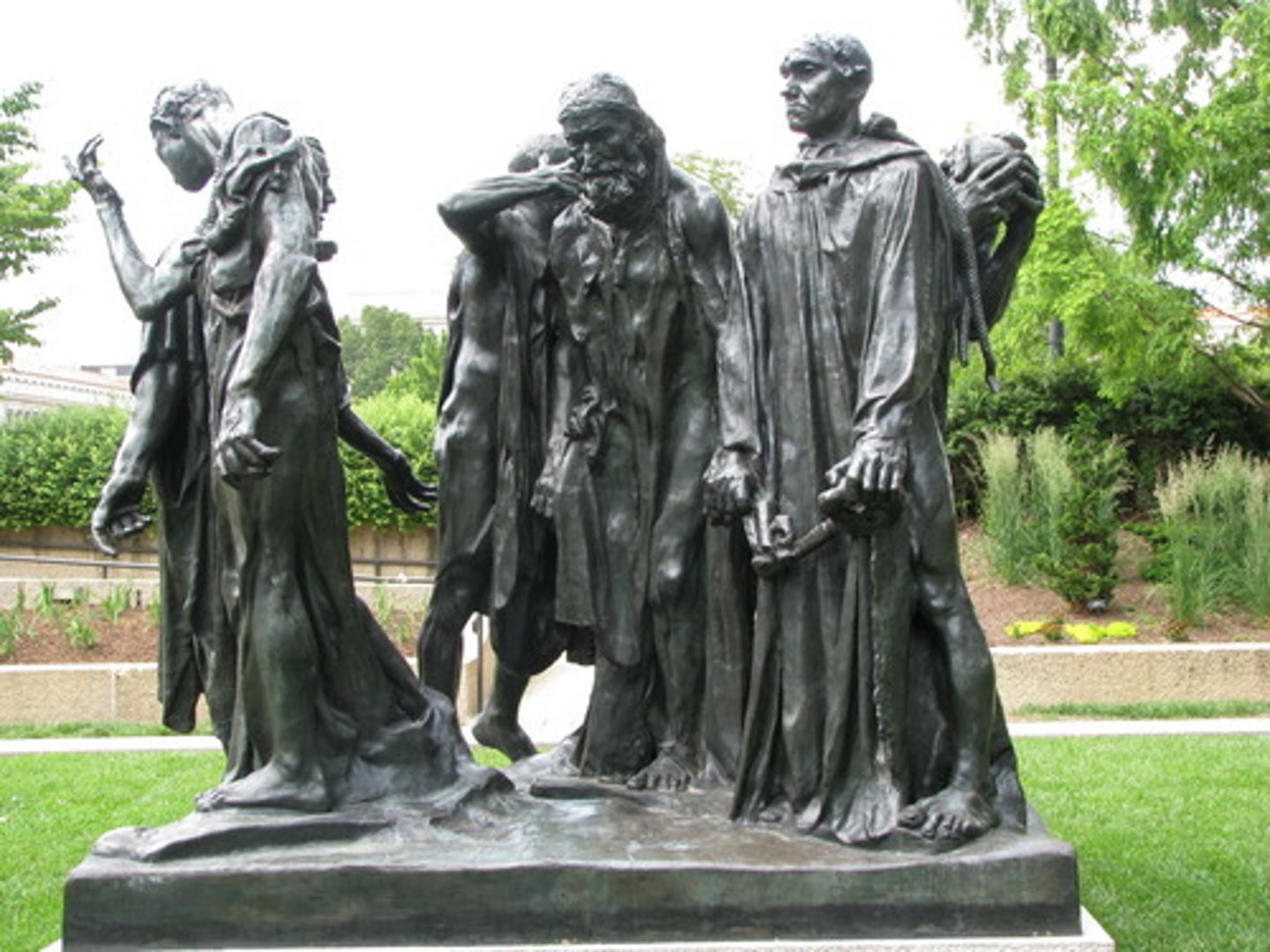
Rouault
expressionism and fauvism
- bold color palette
- thick bold brushstrokes
- religious and spiritual themes
- figurative focus
- use of outlines
- search for truth and meaning of life
- influenced by fauvism
- commented on social issues and human suffering
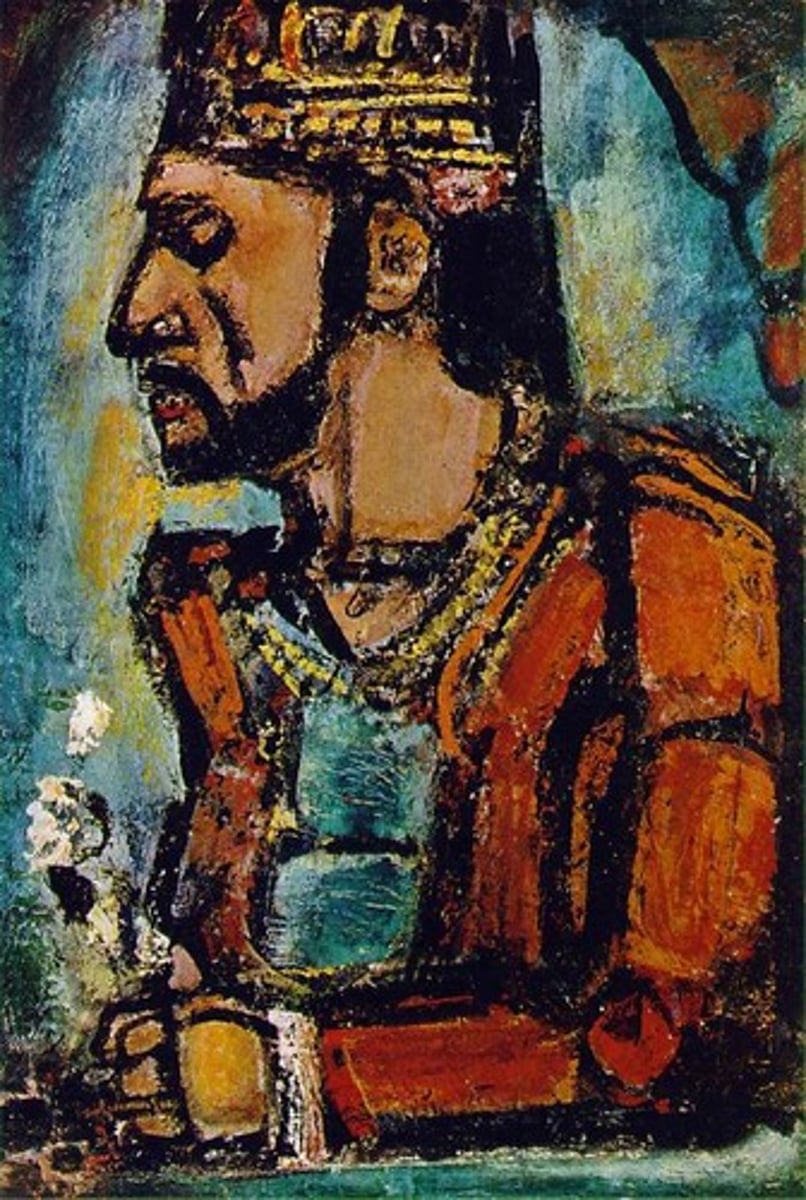
Schiele
expressionism
- emotional intensity
- distorted forms
- bold line work
- human figure
- eroticism and symbolism
- unusual cropping
- intimacy and immediacy
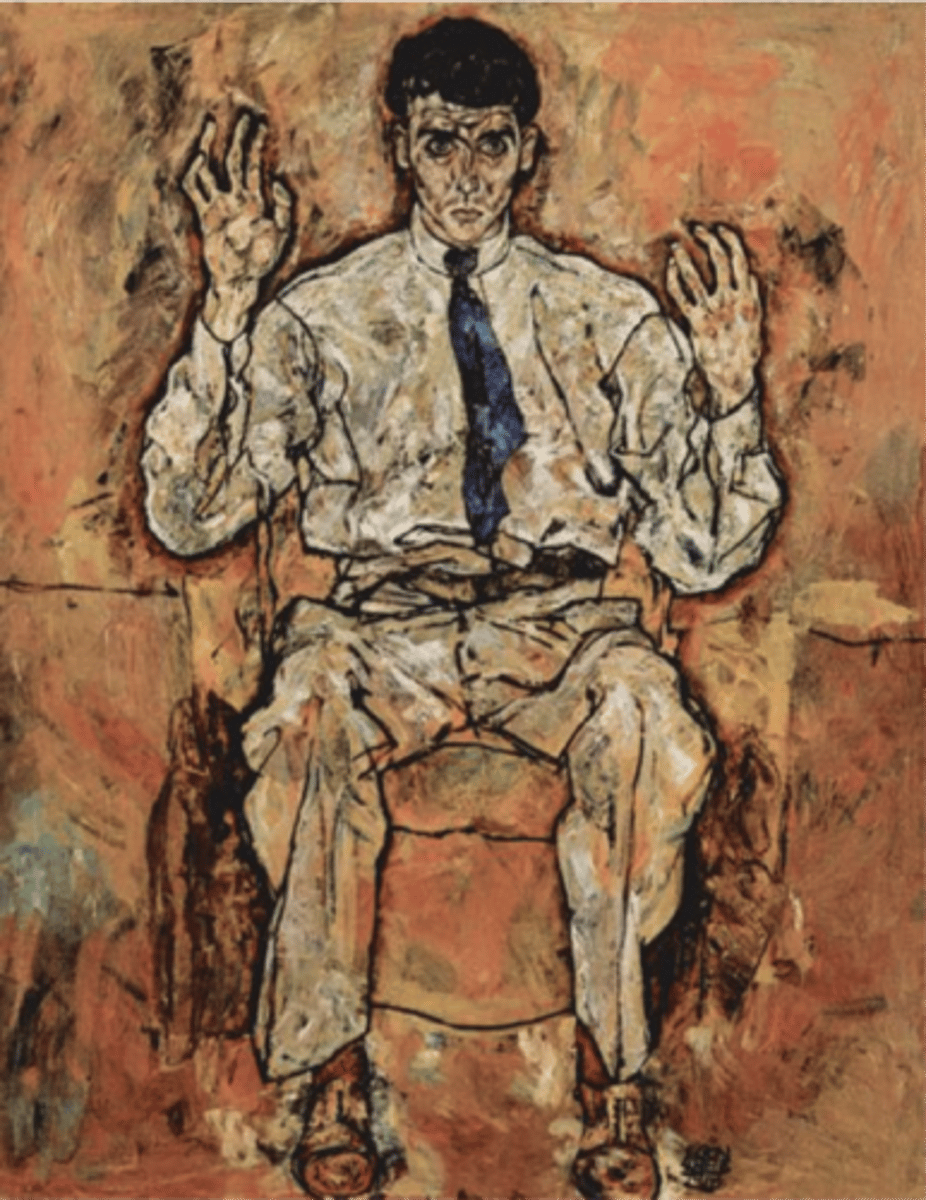
Seurat
pointillism and Post-Impressionism
- pointillism
- scientific approach to color theory
- depiction of modern life
- specific mood in his paintings
- form and volume
influenced by impressionism

Sullivan
modern architecture
- form folllows function
- innovative use of steel and glass
-ornamental detail
- vertical emphasis
- unity of design
-influence of nature
- asymmetry and rhythm
- architecture should serve society and improve the human experience
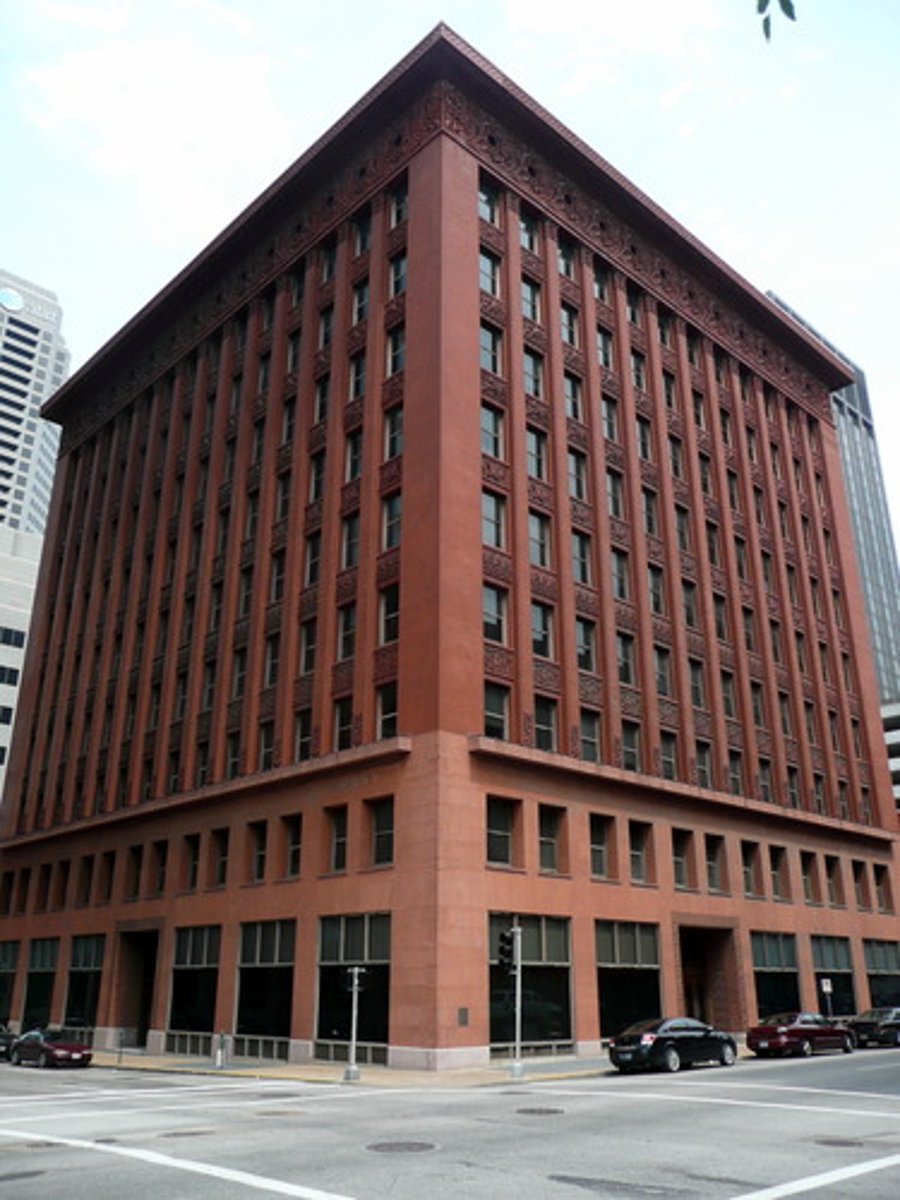
Tatlin
constructivism
- art a tool for social change
- materials like metal glass and wood
- art should serve a functional purpose
- blurred the lines between art and utilitarian design
- most projects are vertical
- collage techniques
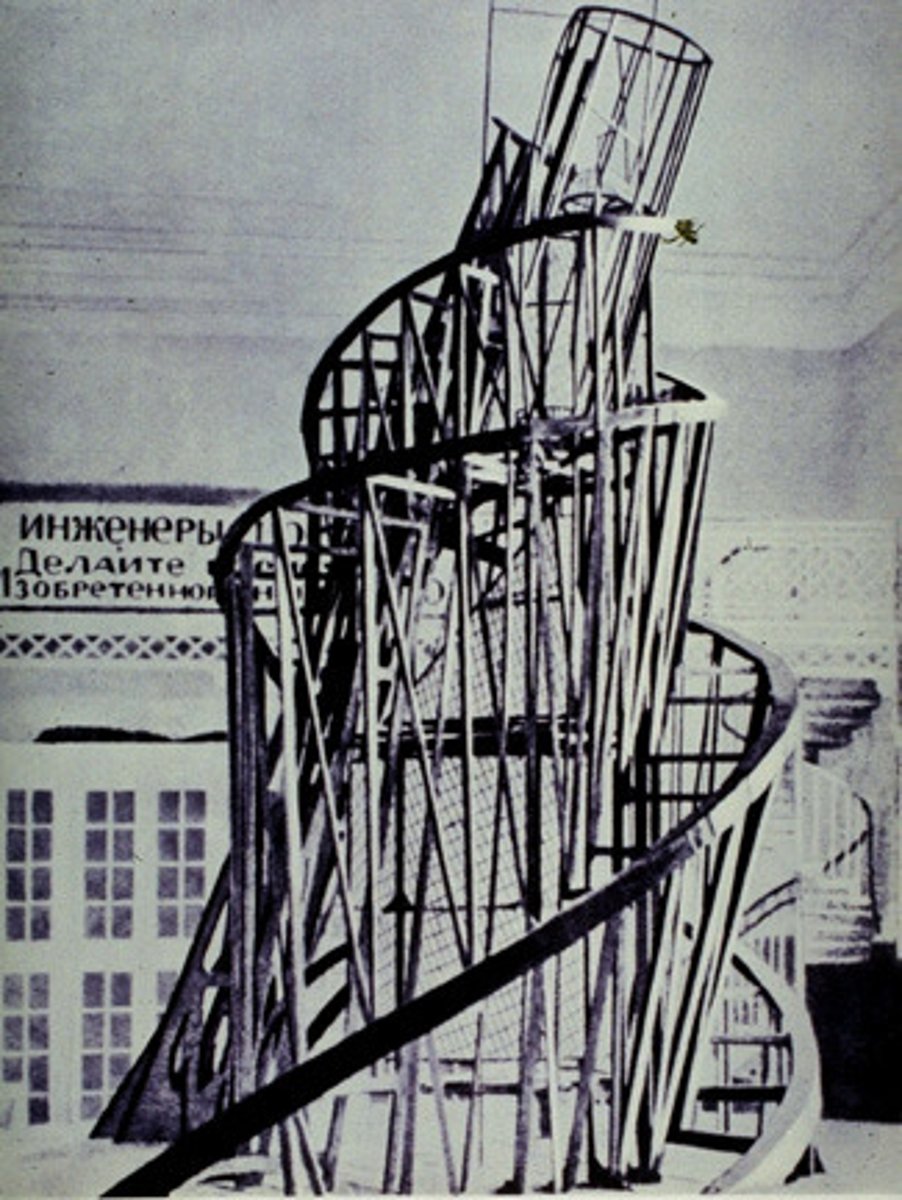
Turner
romanticism
- dramtic use of light
- weather changing
- movement and loose expressive brush strokes
- nature's power
- historical and literary references
- placed the horizon too low or too high
- influenced impressionists and abstract expressionists
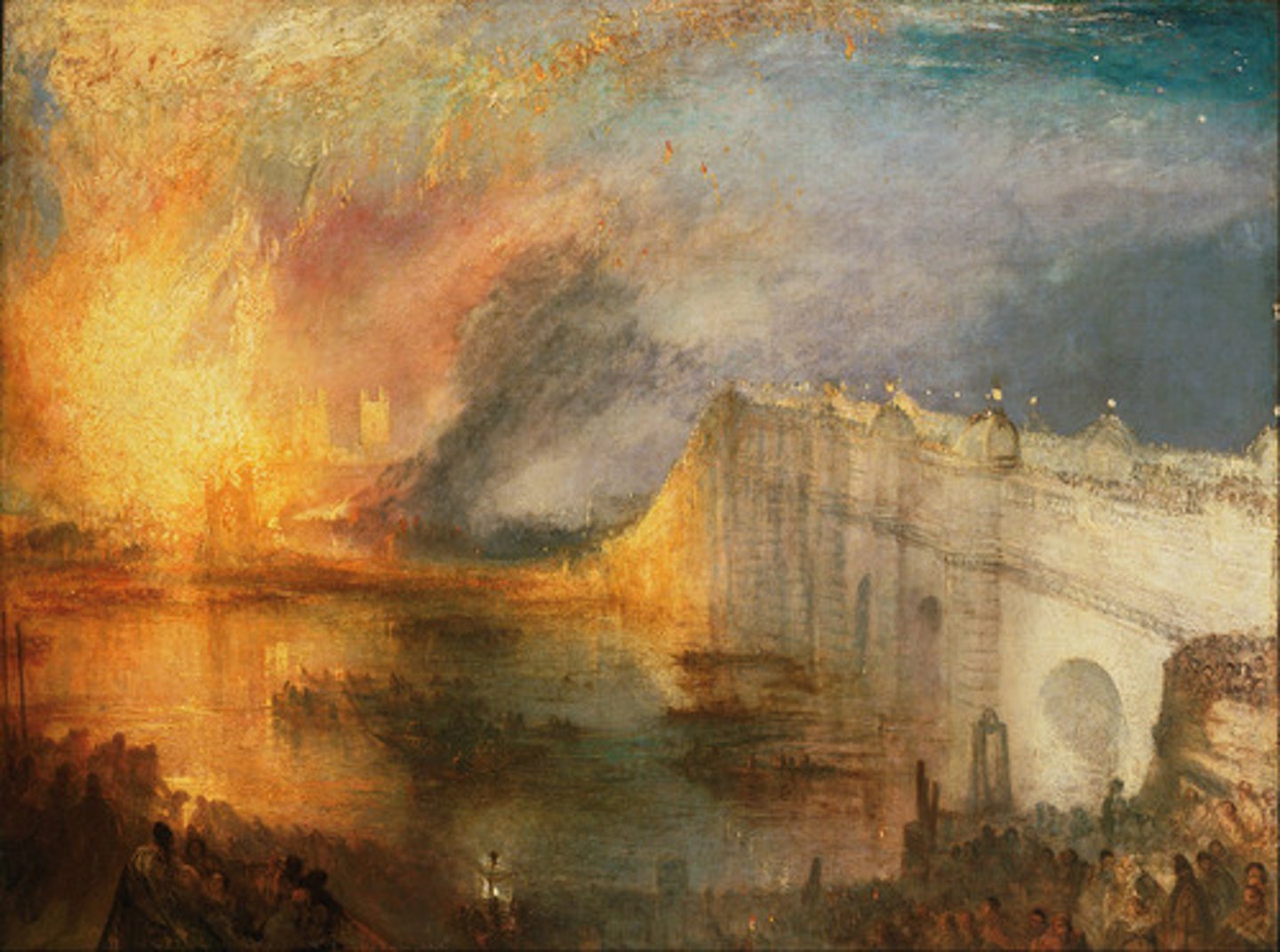
Van De Velde
dutch golden age/maritime art
- realism and detail
- dramatic lighting
- dynamic composition
- naturilism
- included historical contexts like ships and naval battles
Van Gogh
post-impressionism
- dutch
- saturated colors
- expressive brush work
- themes of isolation, joy, and despair
- influenced by japanese art (flat areas of color and bold outlines)

Whistler
aestheticism and impressionism
- emphasis on color and harmony
- influenced by music
- influenced by japanese art
- portraiture and intimacy
- was a draftsman, printmaker
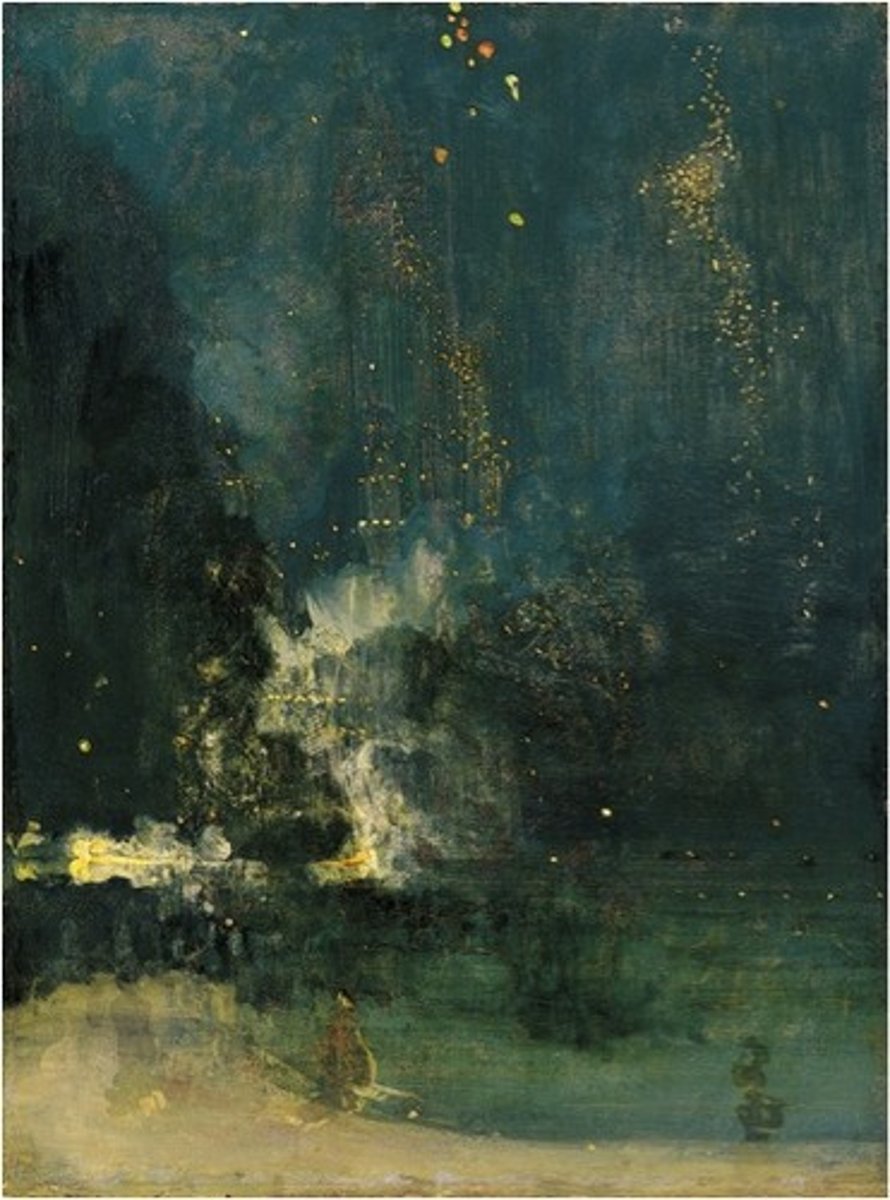
Wright
modern architecture
- organic architecture
- open floor plans
- horizontal lines
- use of natural materials
- incorporated natural light
- geometric forms
- designed custom furniture and fixtures
- influenced by japanese architecture
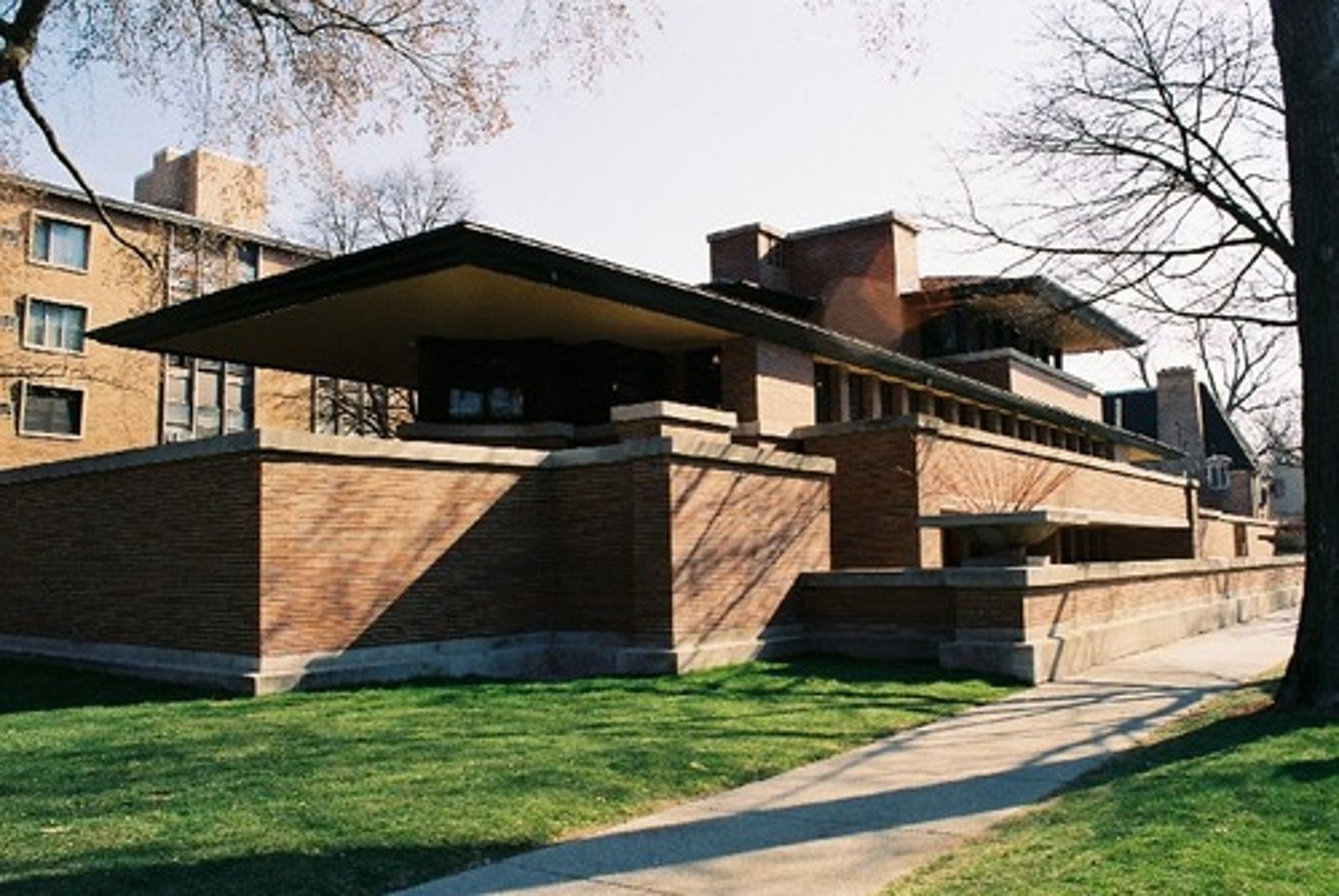
Part 4: Vocabulary Terms
4
Avant-Garde
Ahead of the times, especially in the arts
Manifesto
a public declaration of policies or intentions
Papier Colle
the technique of using paper for collage.
Found Objects
material incorporated into artwork that is not normally considered an artistic medium. Found objects serve the same purpose in sculpture that magazine cutouts serve in collage.
Patronage
the ppl who commissioned the art back in the day
Part 5: Artwork Identification
5
Nocturne in Black and Gold: The Falling Rocket
James McNeill Whistler
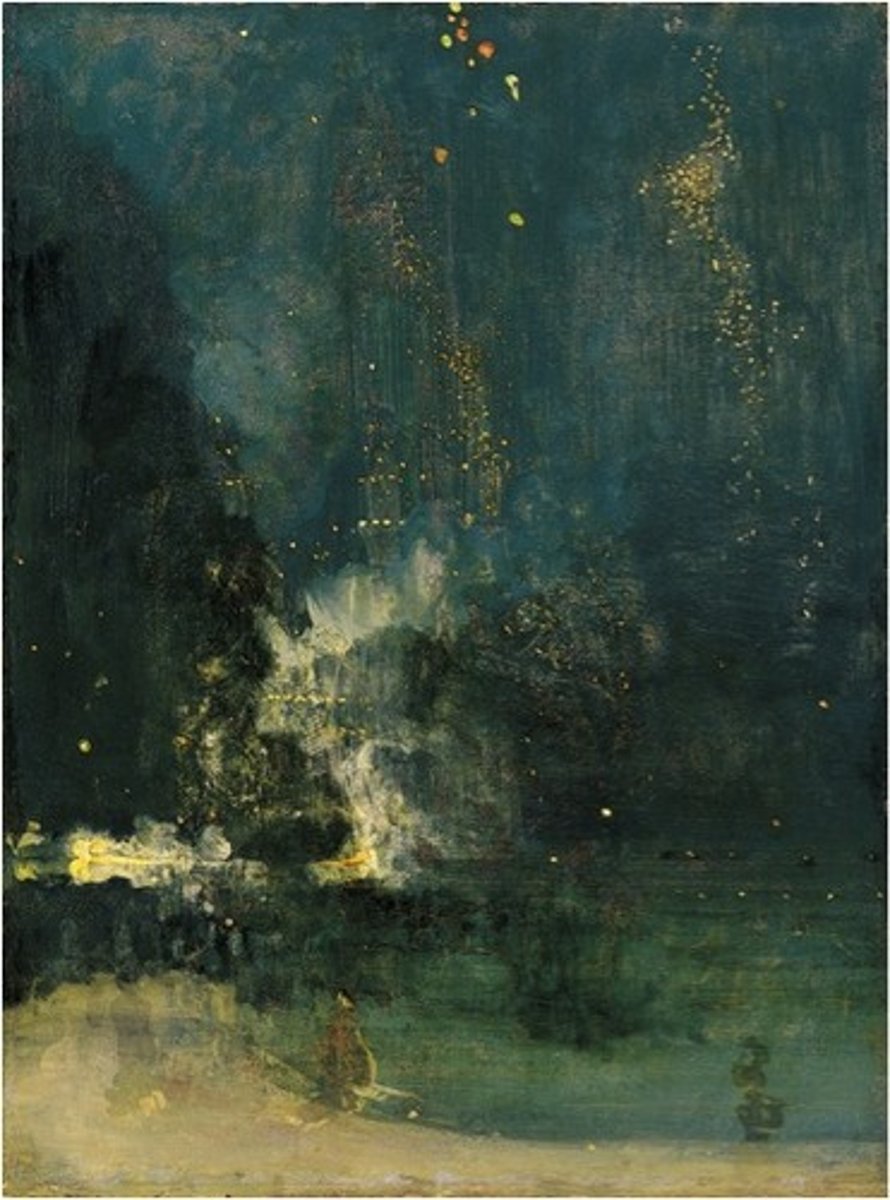
The Oath of the Horatii
Jacques-Louis David

Grand Odalisque
Jean-Auguste-Dominique Ingres
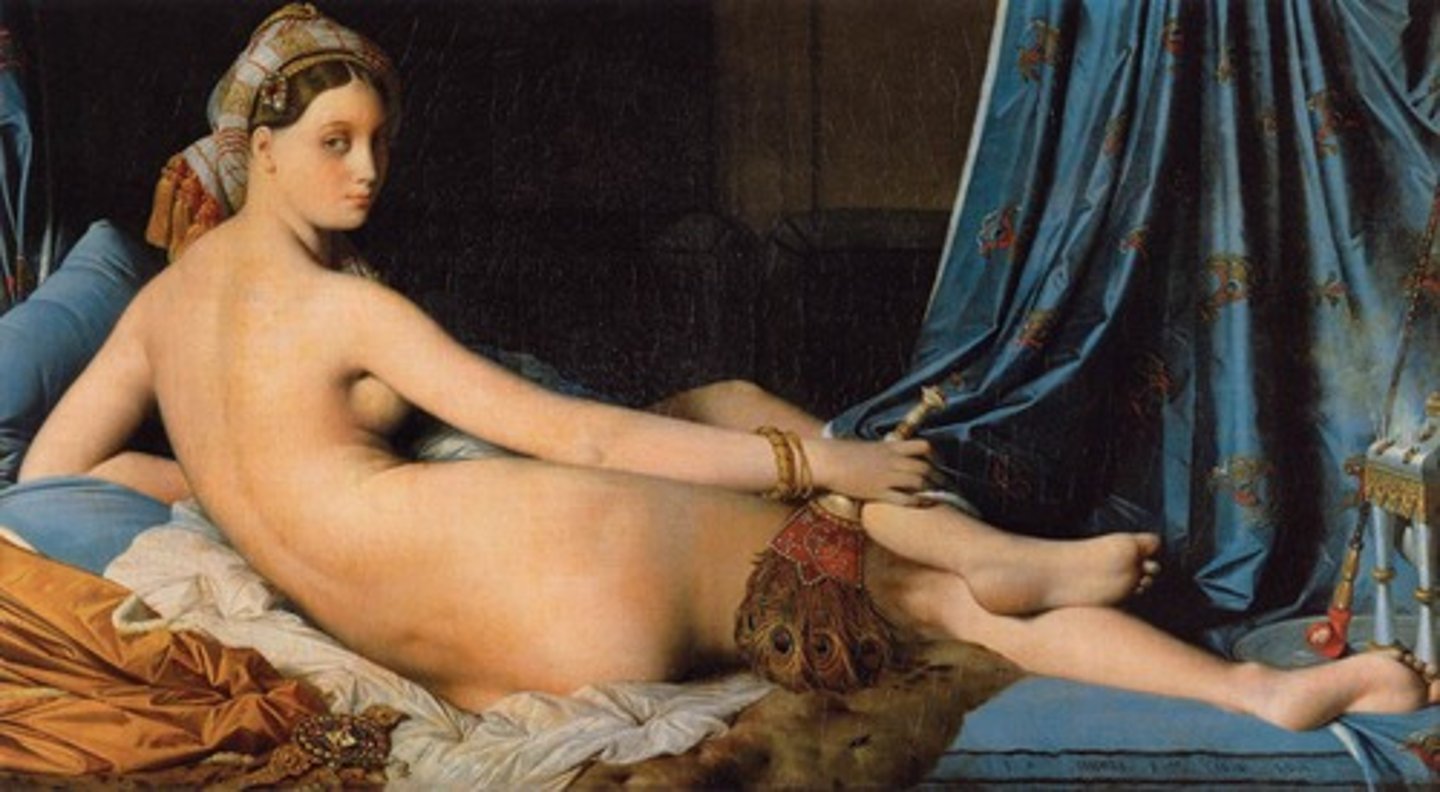
The Hay Wain
John Constable
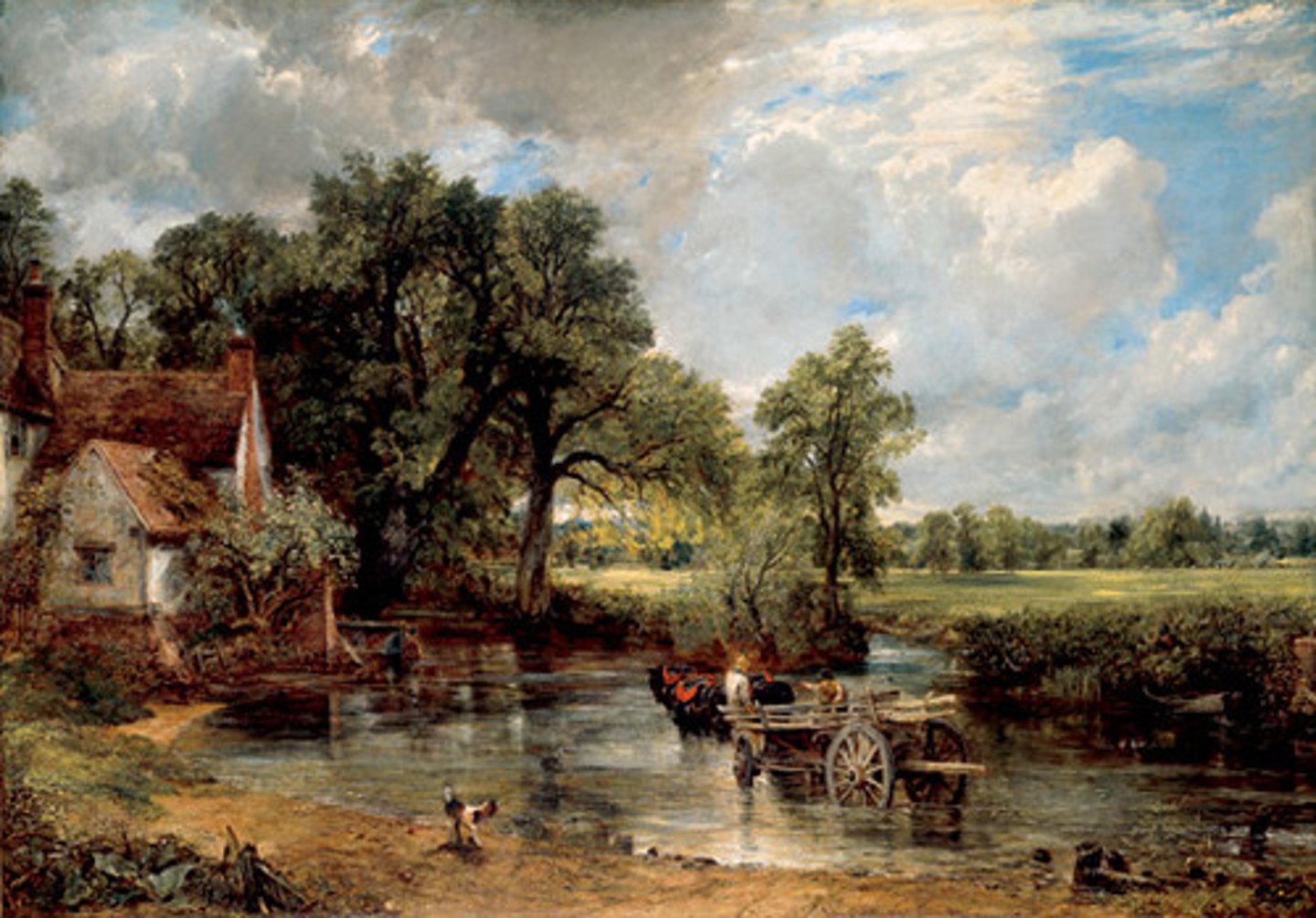
The Burning of the Houses of Parliament
Joseph Mallord William Turner
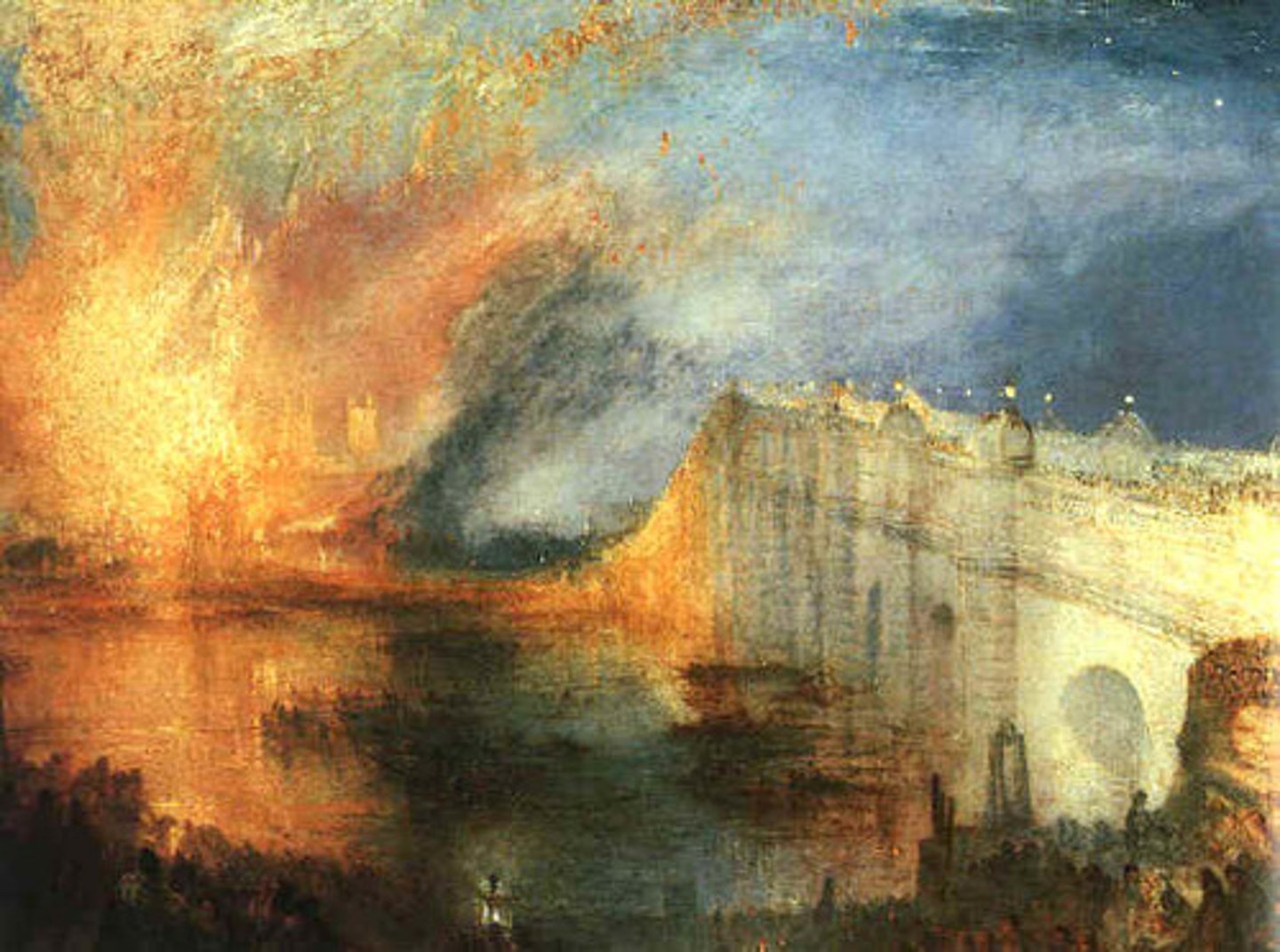
Olympia
Edouard Manet
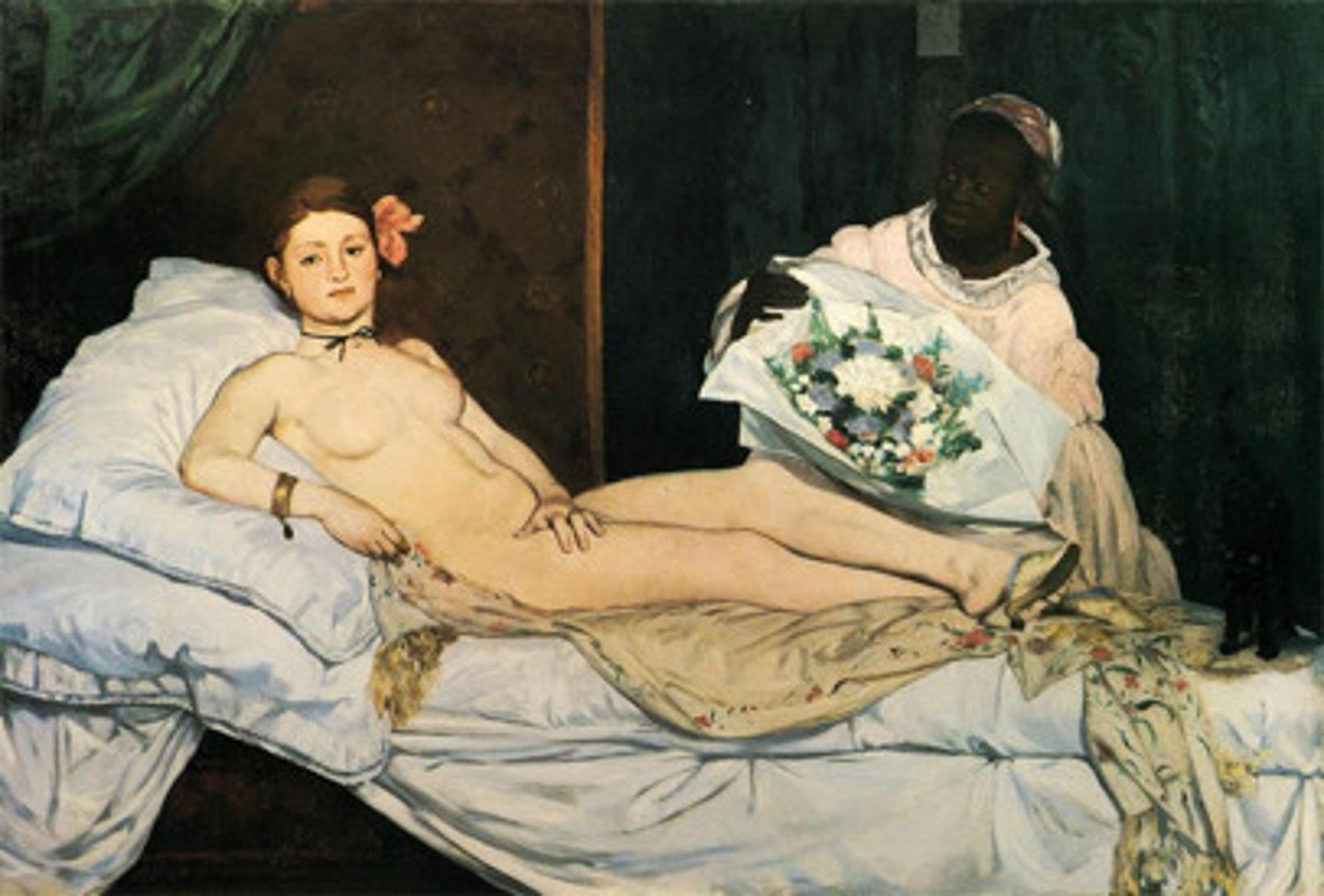
Woman Bathing
Mary Cassatt
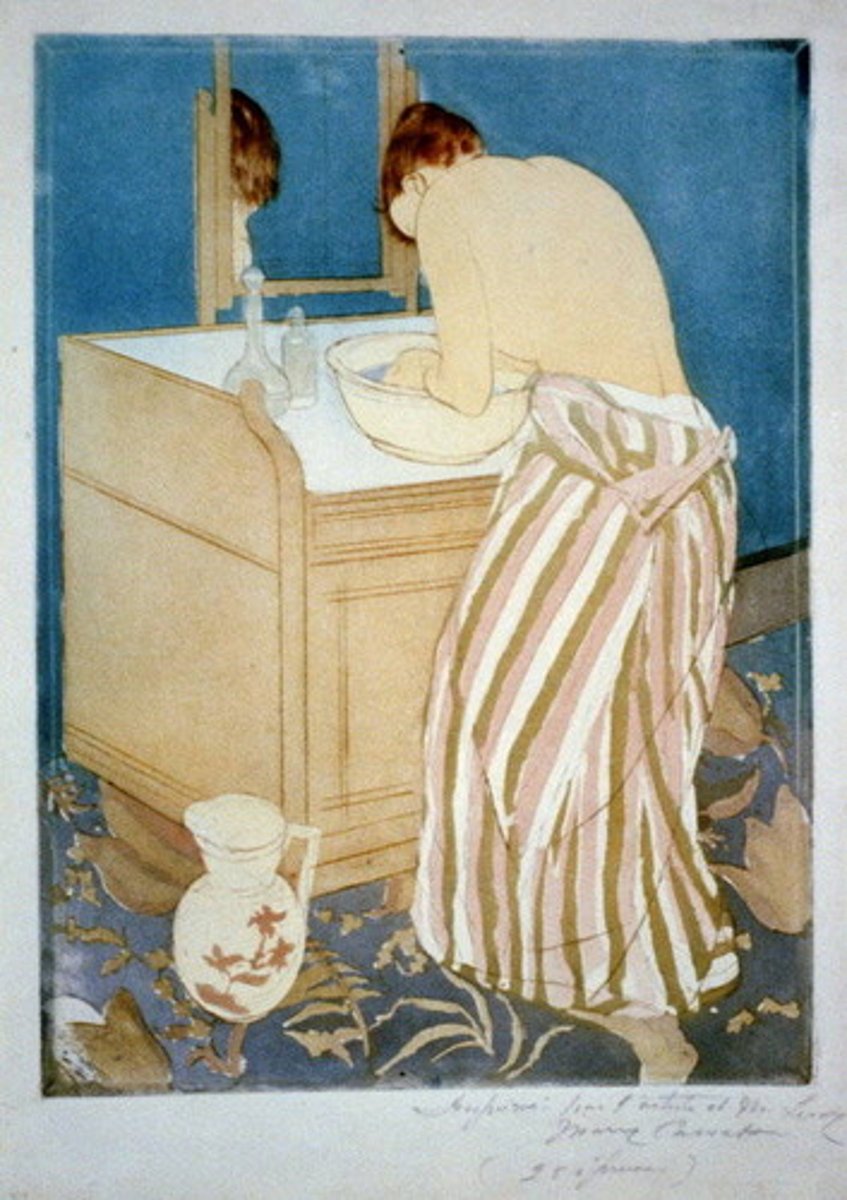
Impression: Sunrise
Claude Monet

Moulin de la Galette
Auguste Renoir
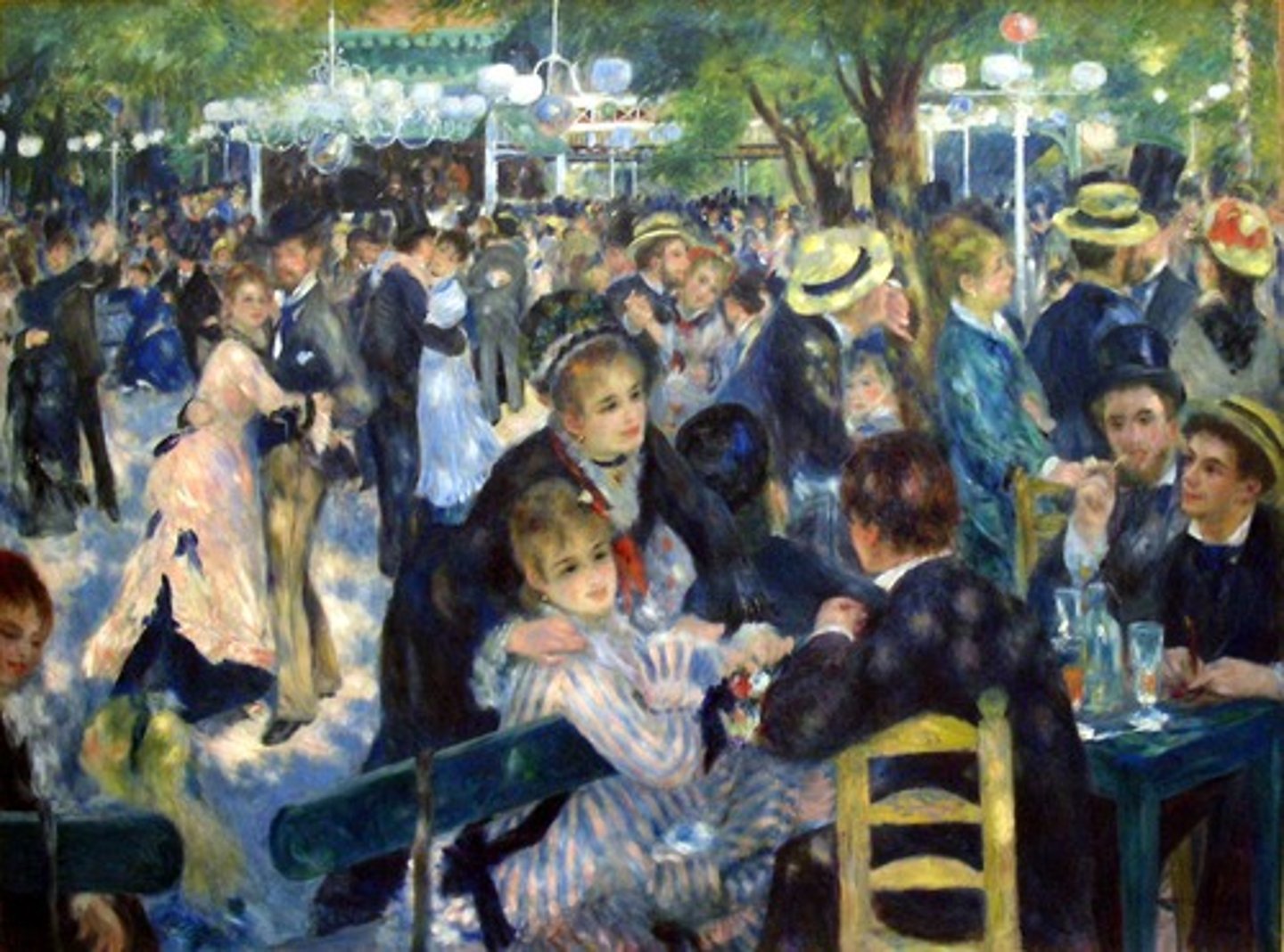
Little Dancer Fourteen Years Old
Edgar Degas

a sunday afternoon on the island of La Grande Jatte
Georges Seurat
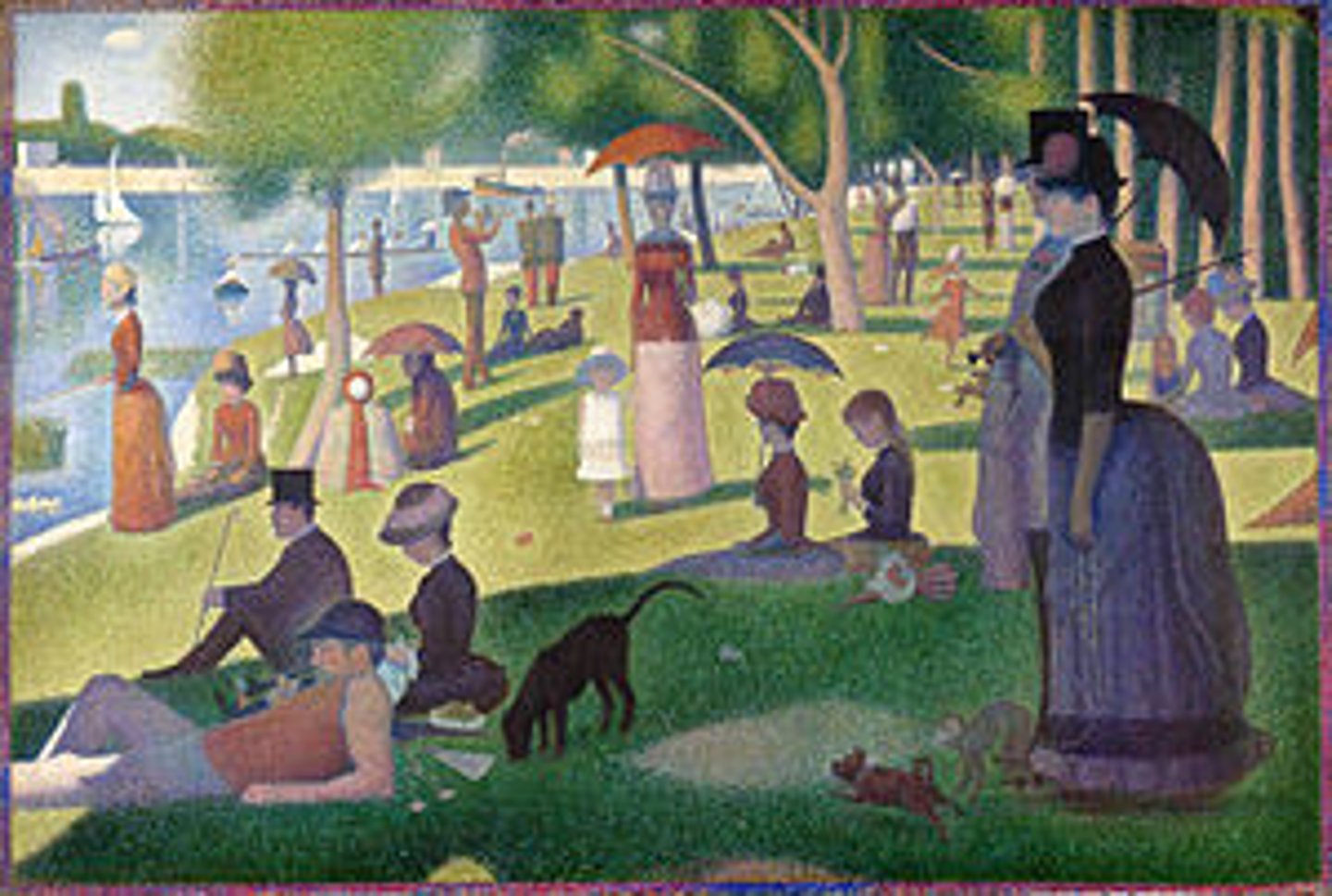
Still Life with Basket of Apples
Paul Cezanne
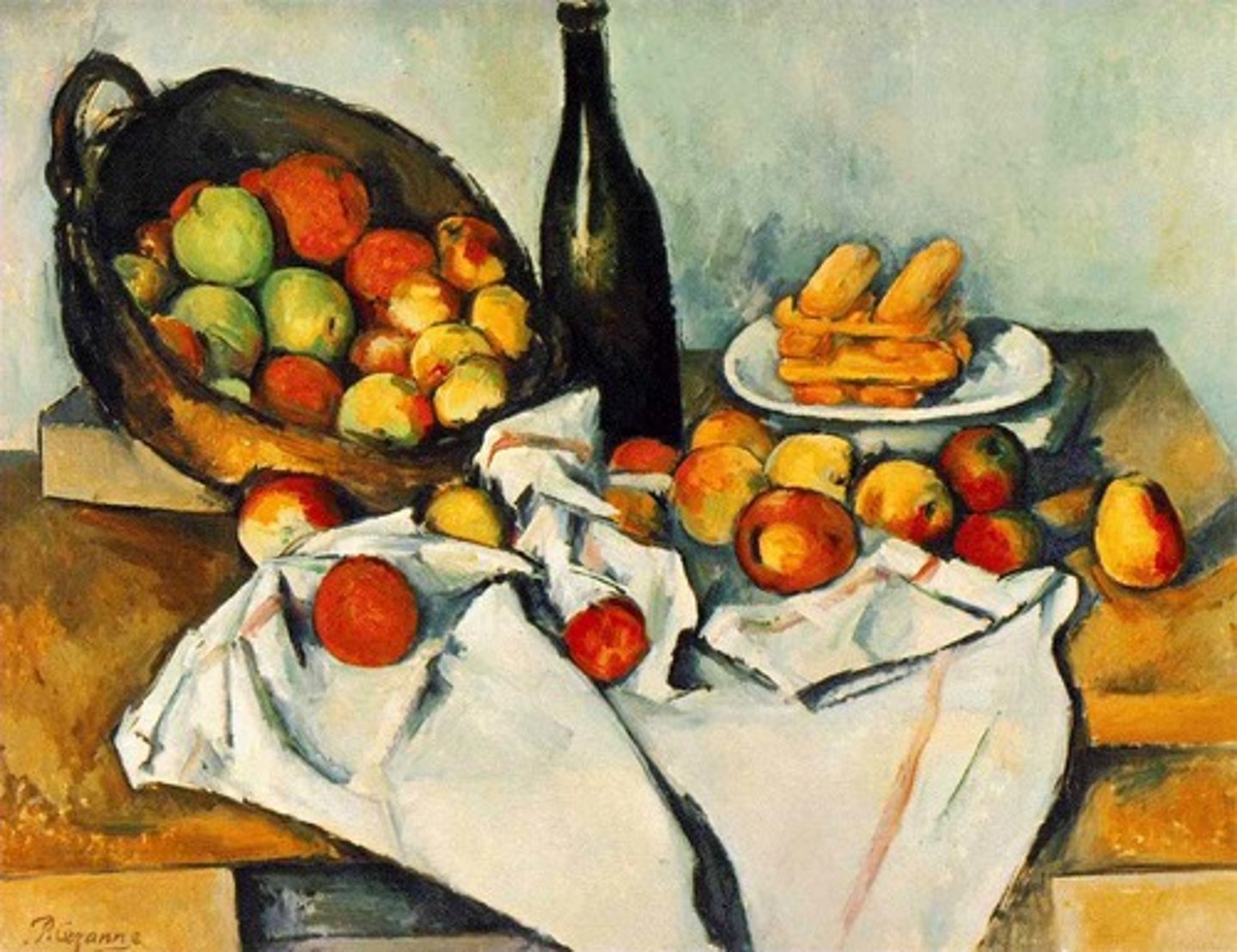
the burghers of calais
Auguste Rodin
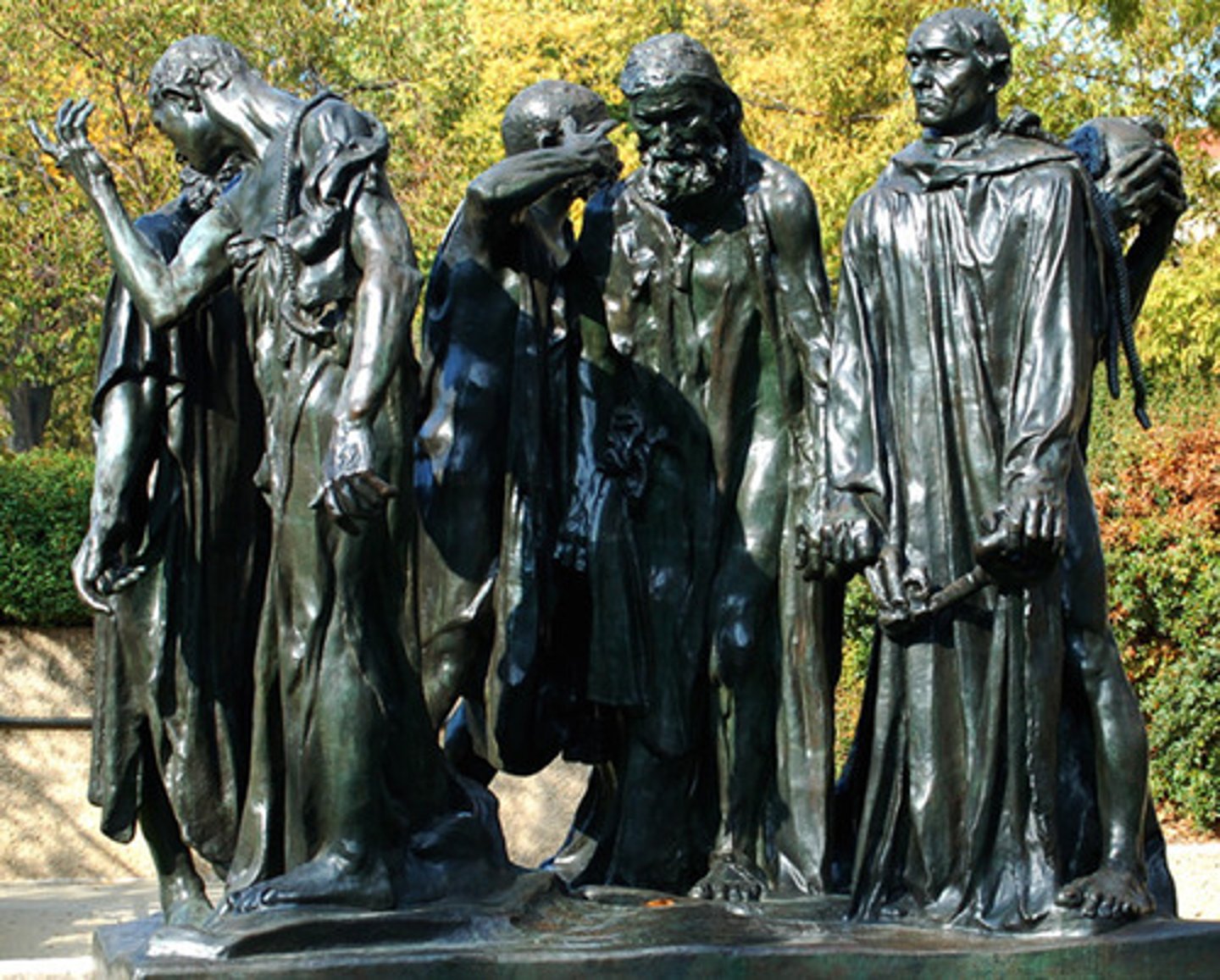
where do we come from? what are we? where are we going?
Paul Gauguin
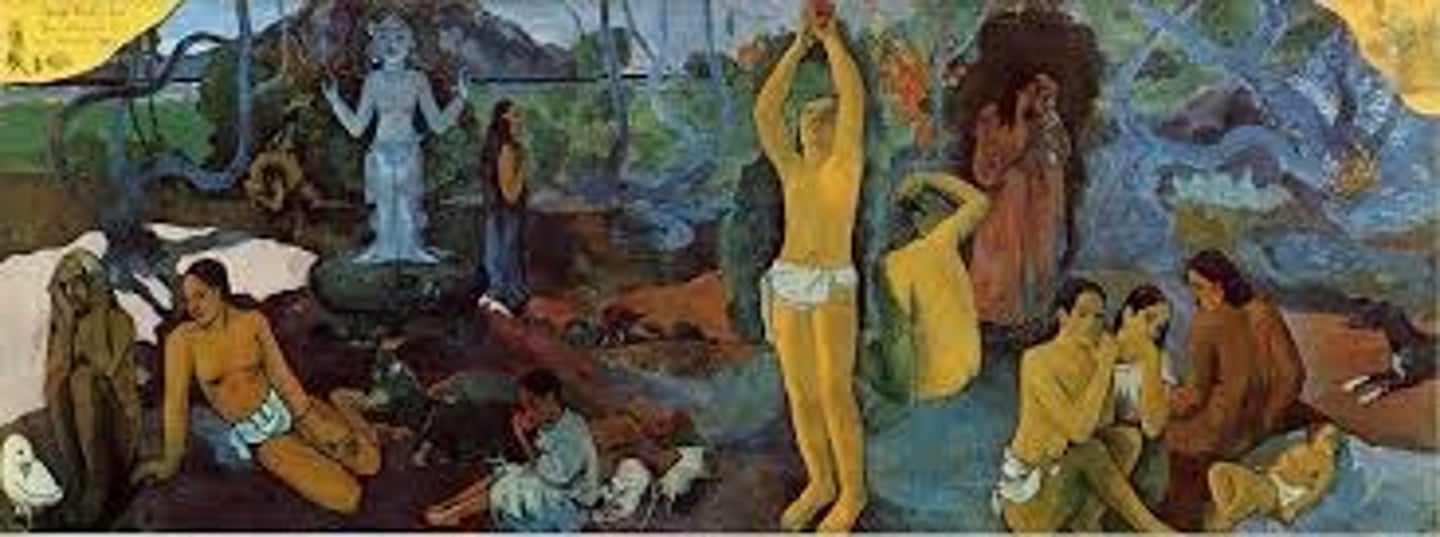
The Starry Night
Vincent Van Gogh

Moulin Rouge - la goulue
Henri de Toulouse-Lautrec

The Kiss
Gustav Klimt
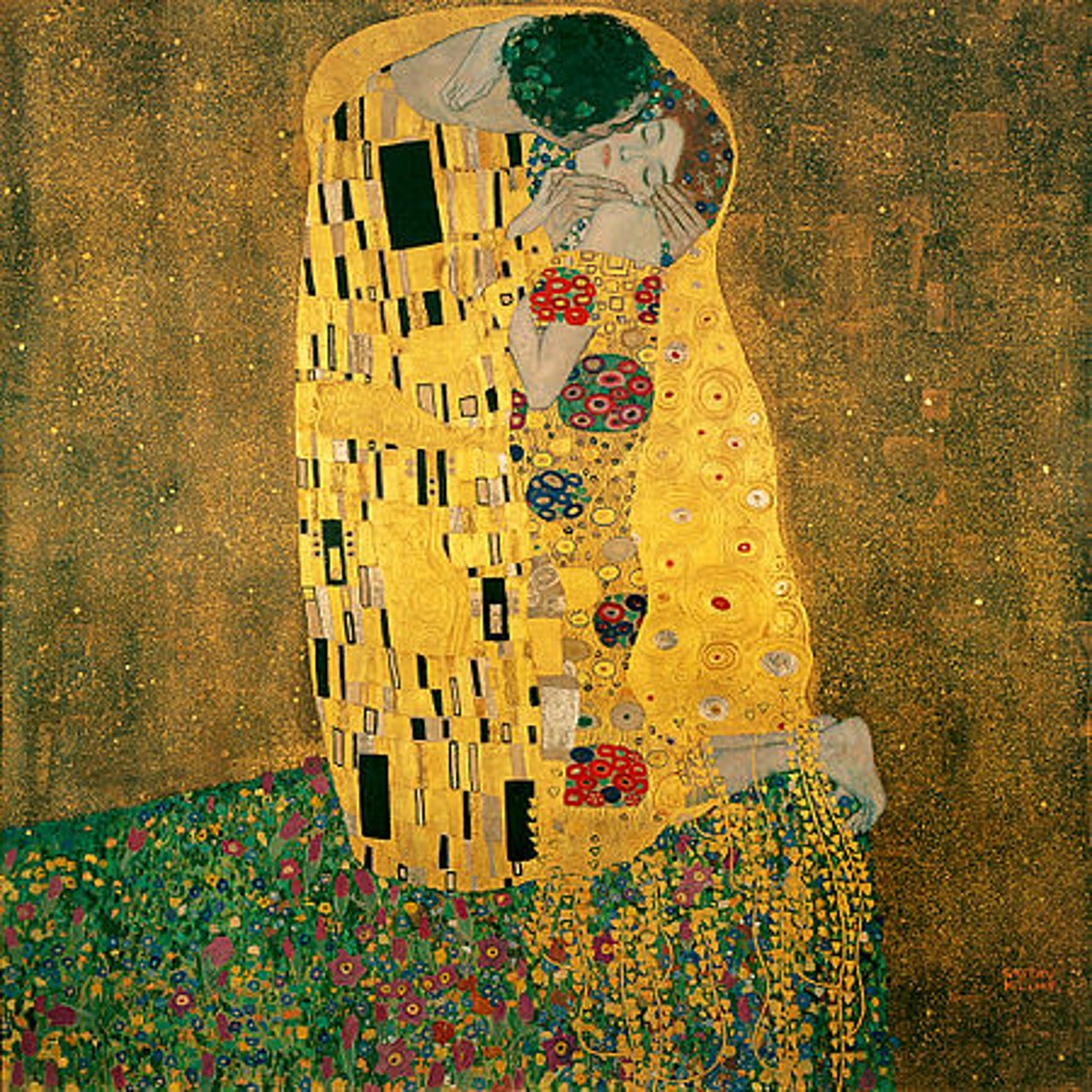
Church of the Sagrada Familia
Antoni Gaudi
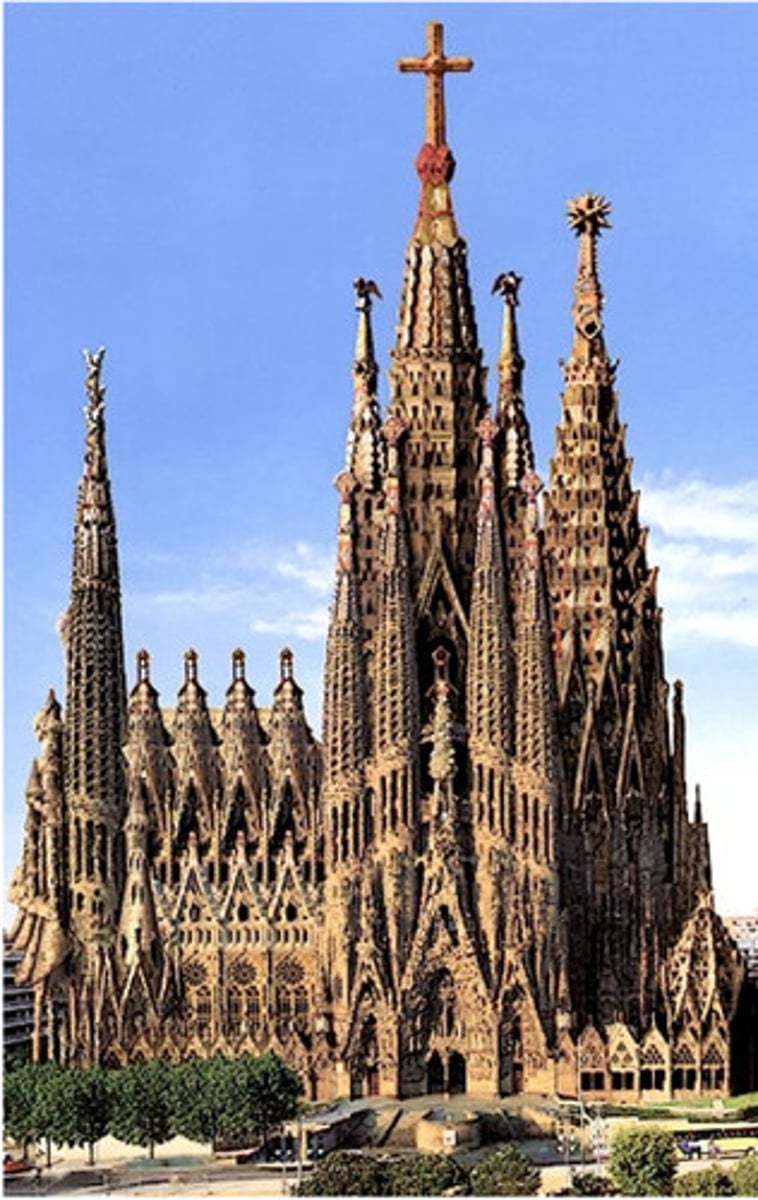
The Scream
Edvard Munch
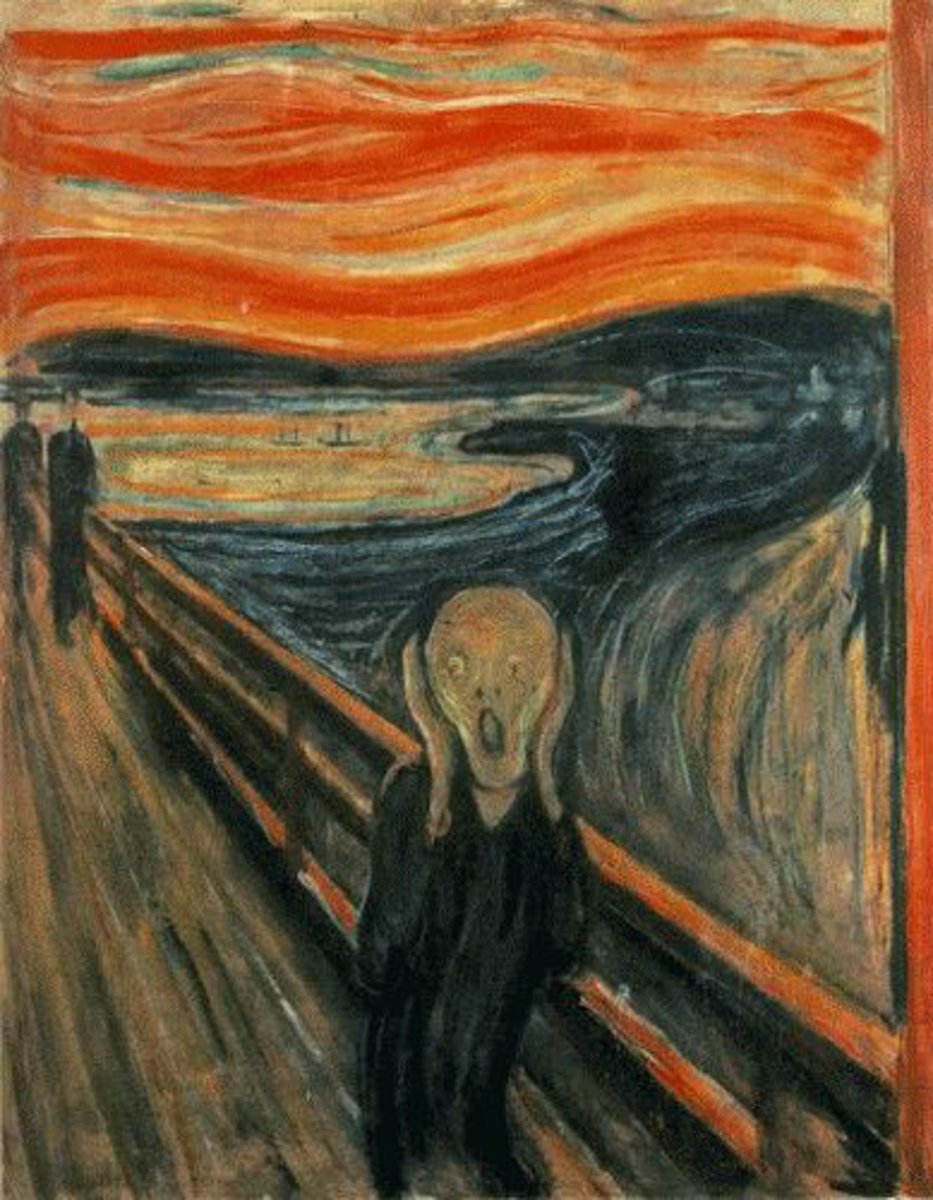
Turning Road, L'Estaque
Andre Derain
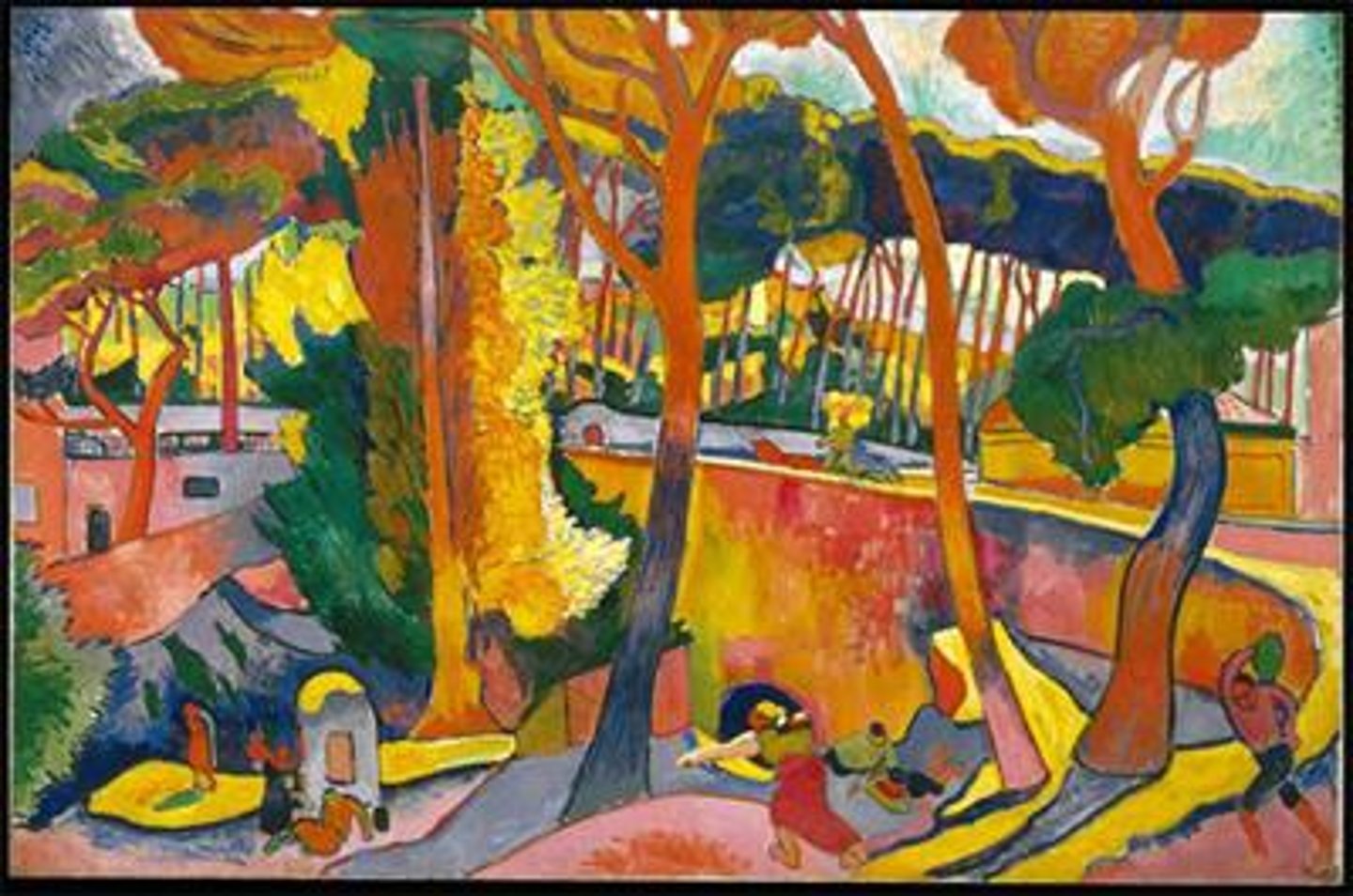
The Old King
Georges Rouault
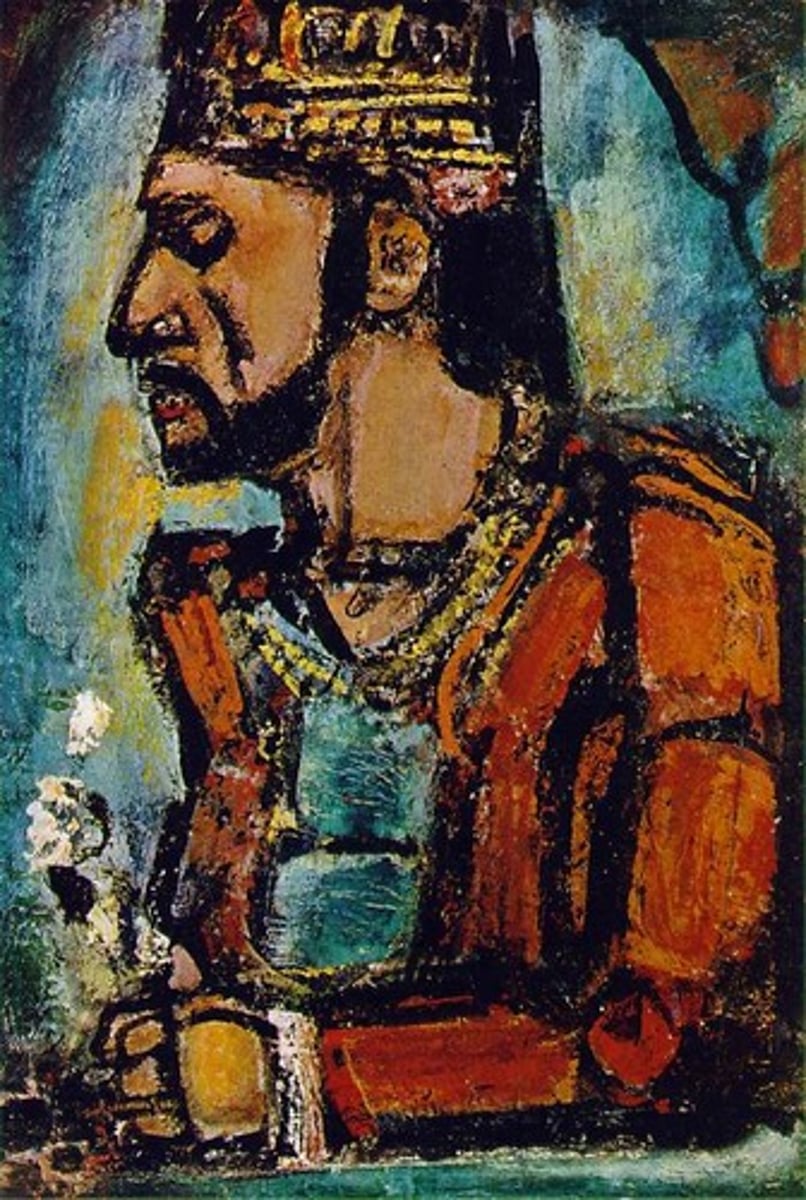
Harmony in Red (The Dessert)
Henri Matisse
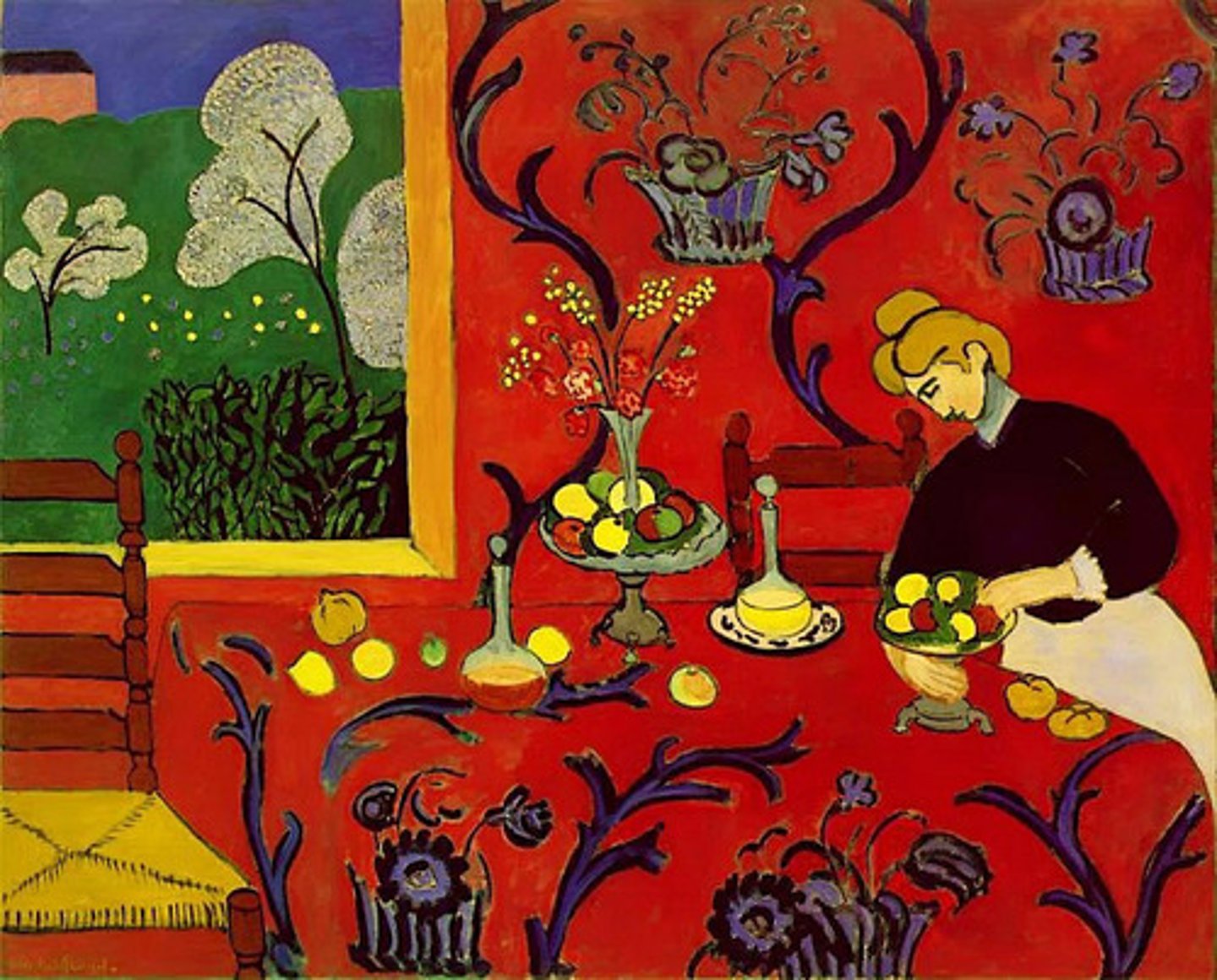
Bird in Space
Constantin Brancusi
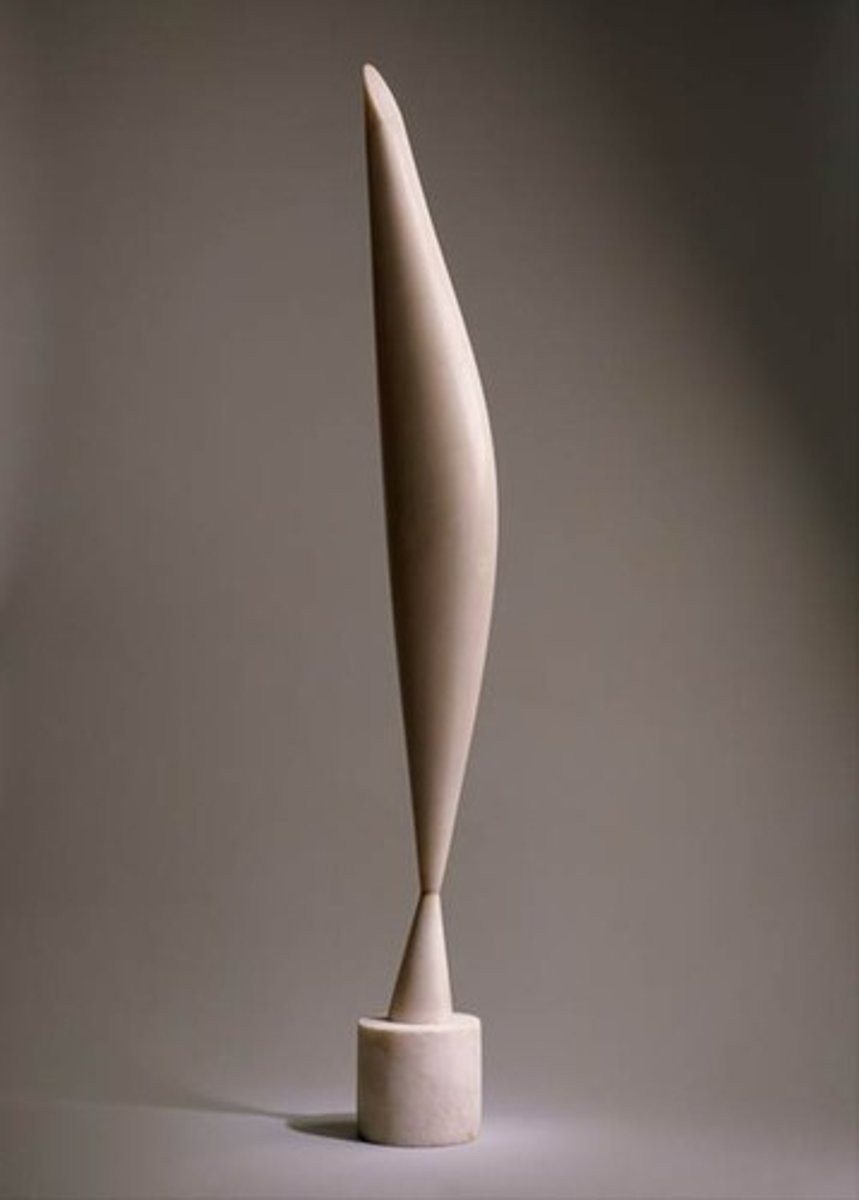
Street, Dresden
Ernst Ludwig Kirchner

Composition VII
Vasily Kandinsky
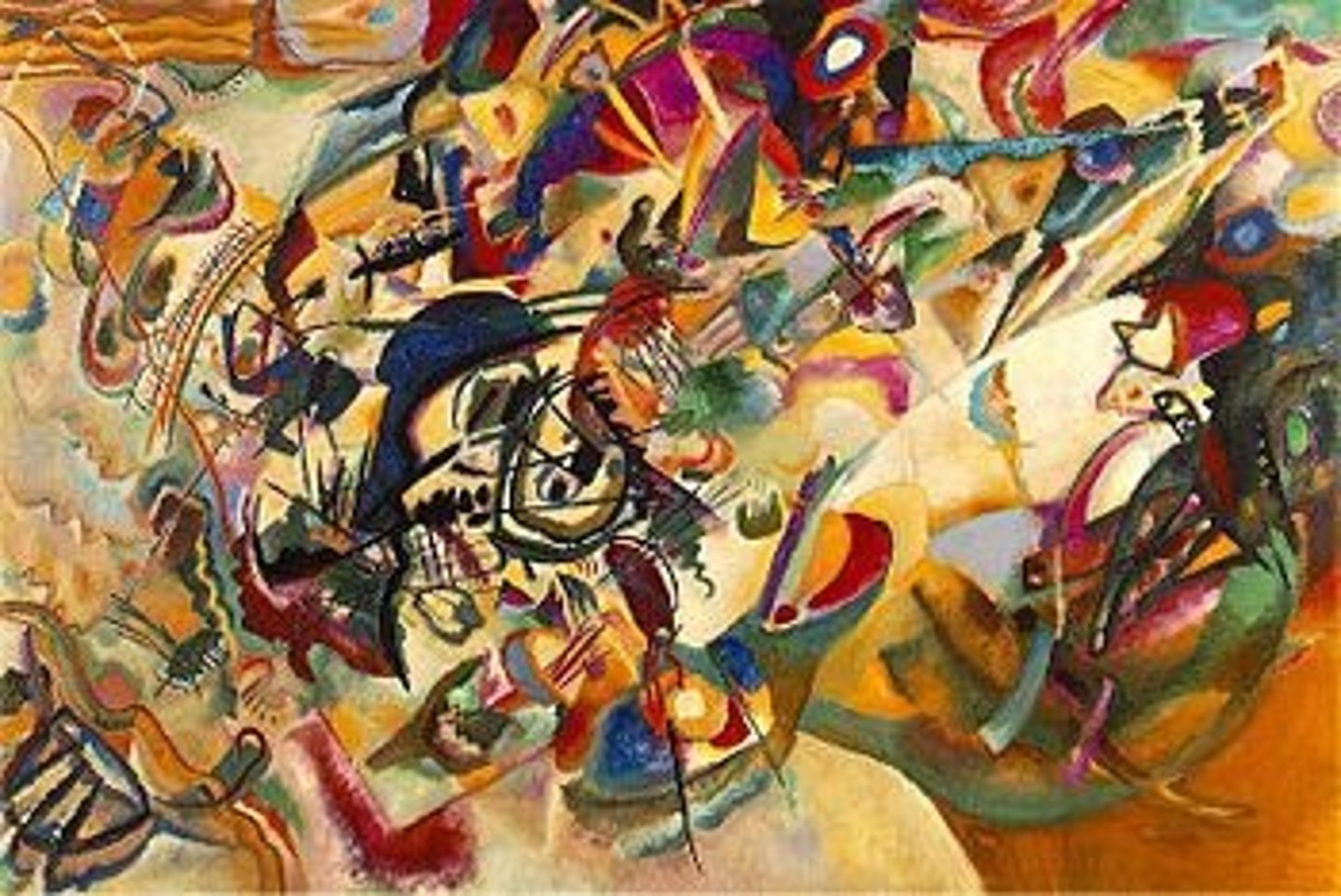
The Large Blue Horses
Franz Marc

Hammamet Mit der Moschee (hammamet with the mosque)
Paul Klee
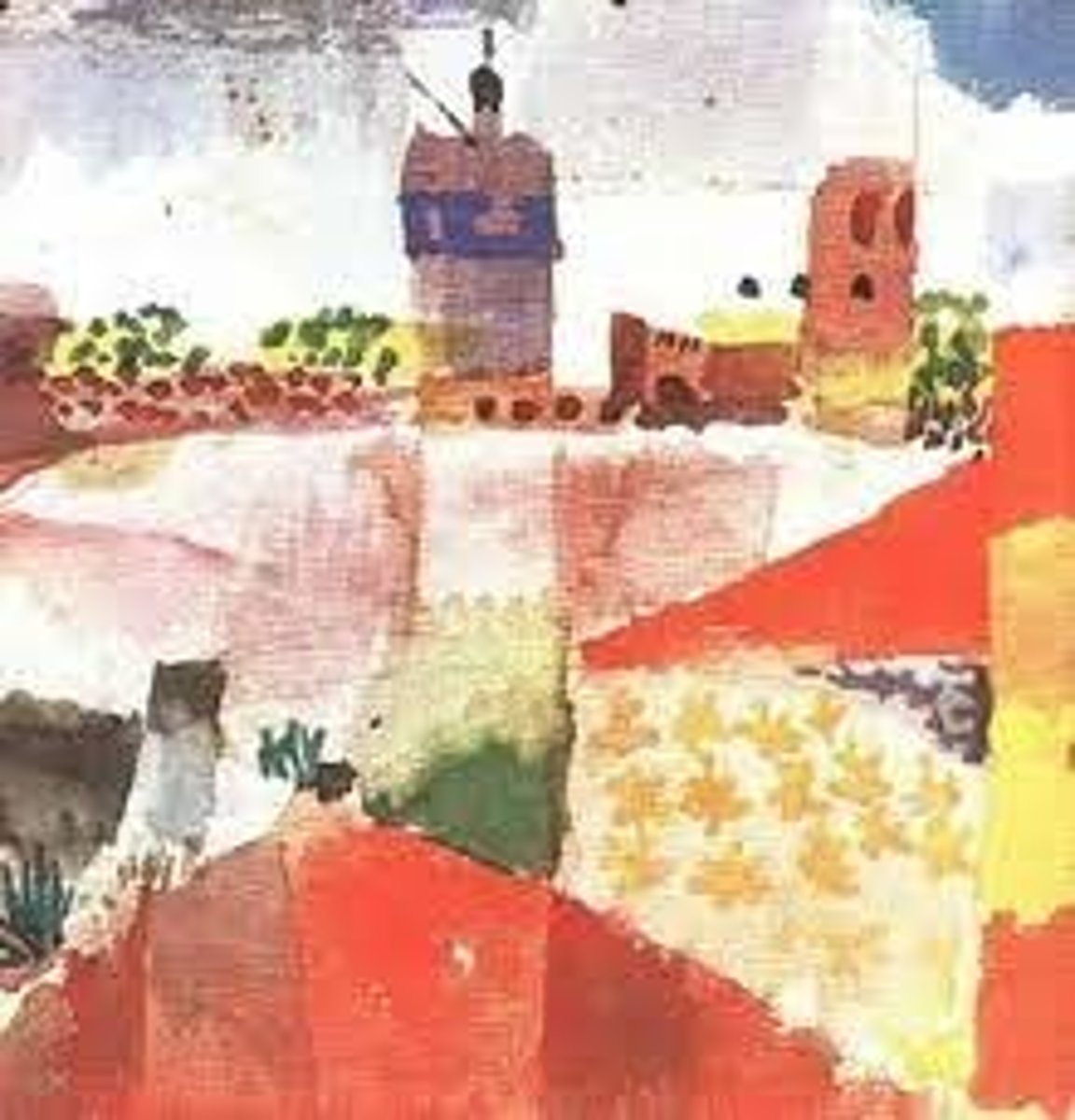
Portrait of Paris von Gutersloh
Egon Schiele
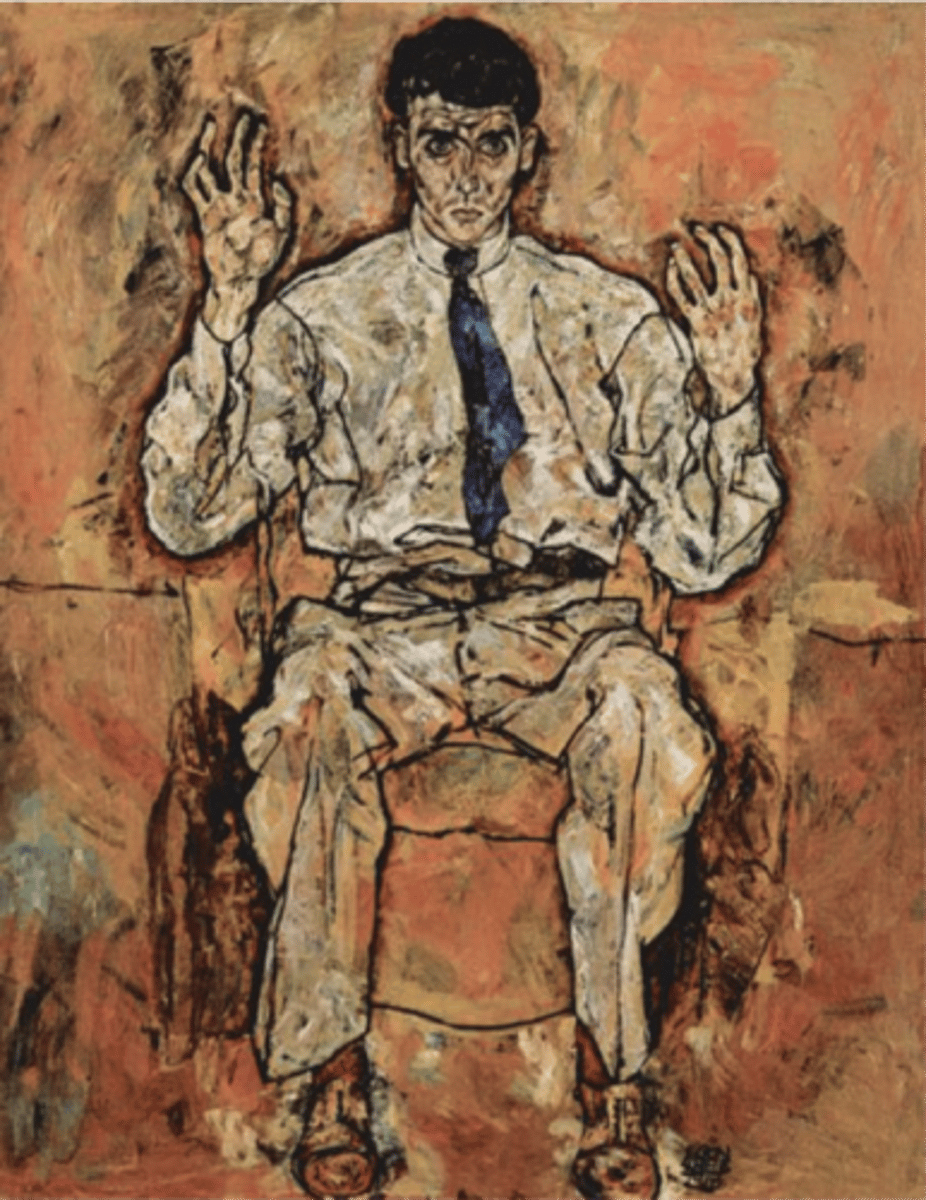
Portrait of Adolf loos
Oskar Kokoschka
